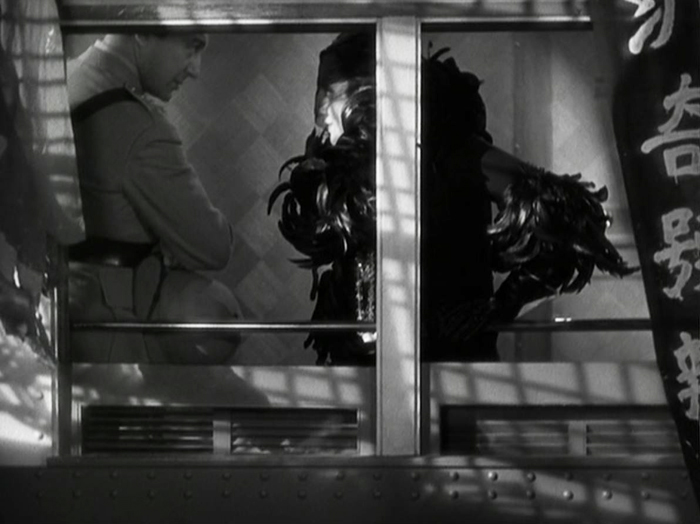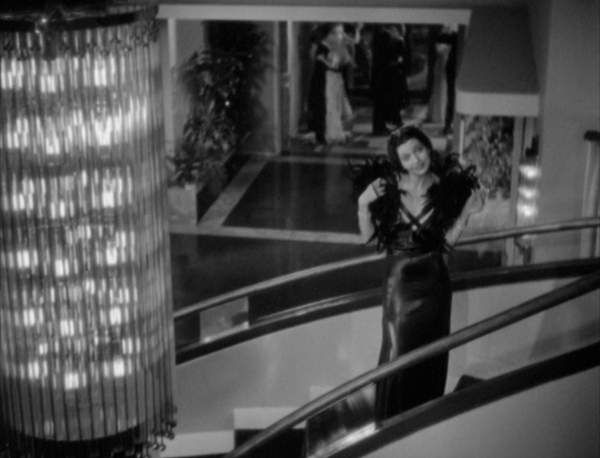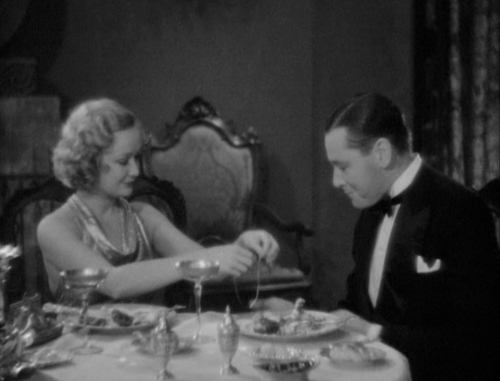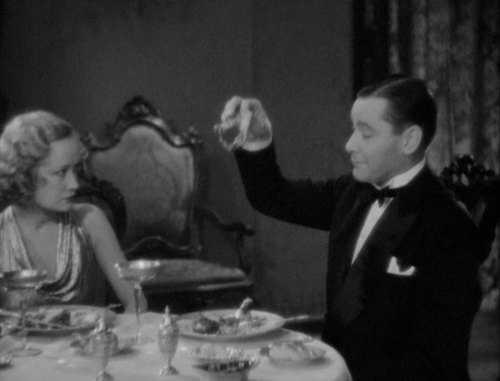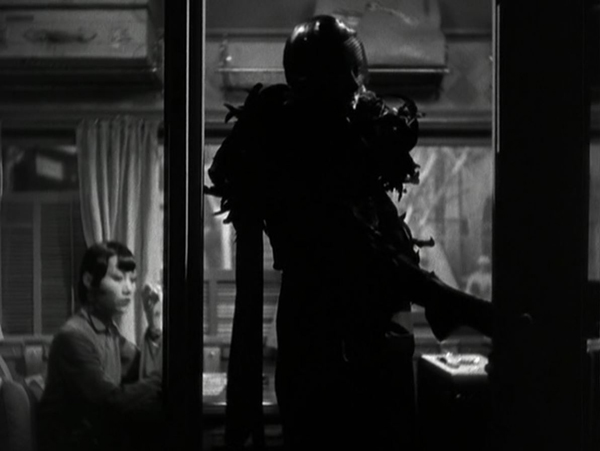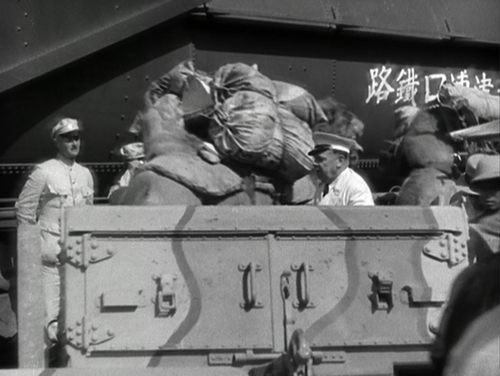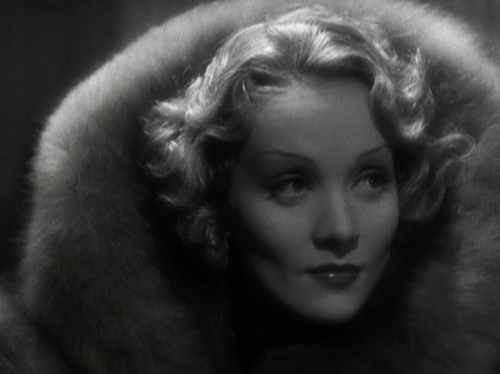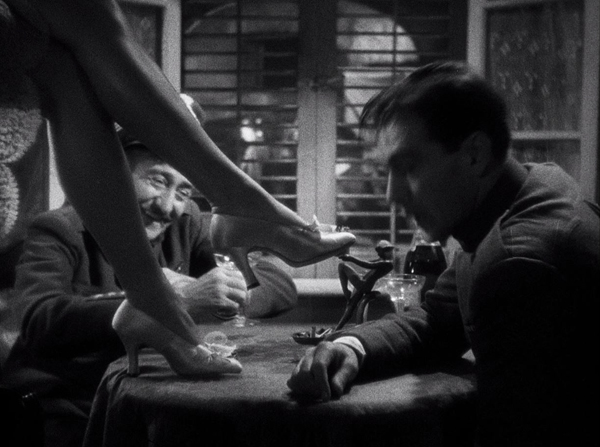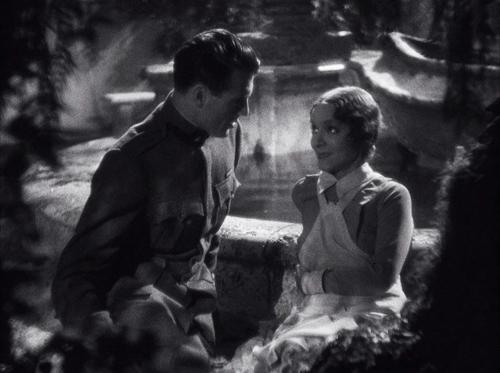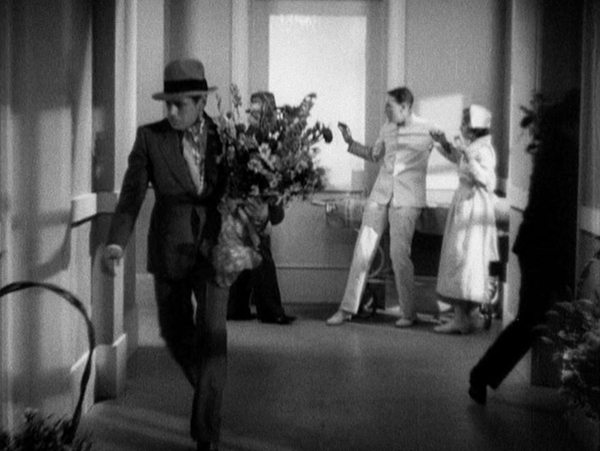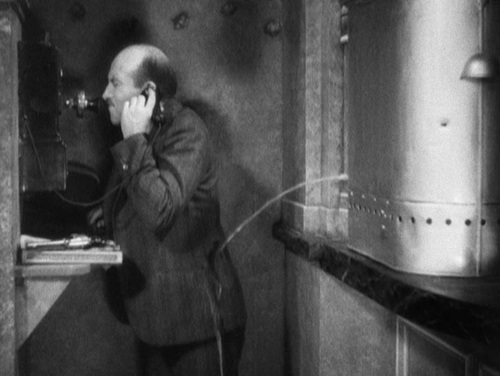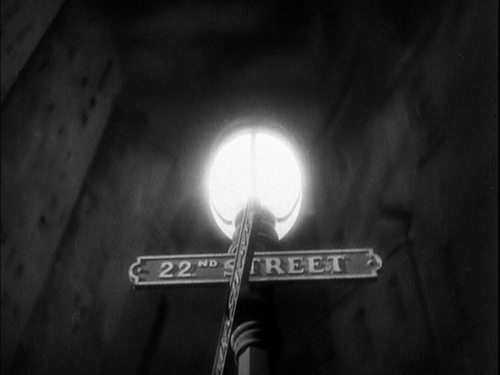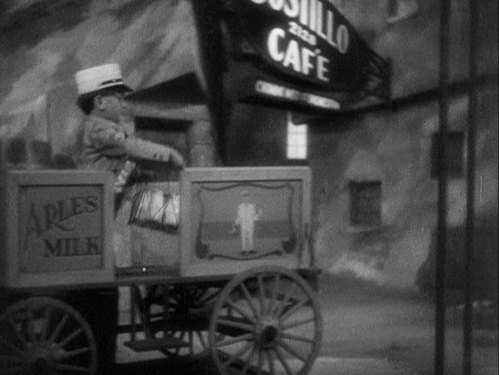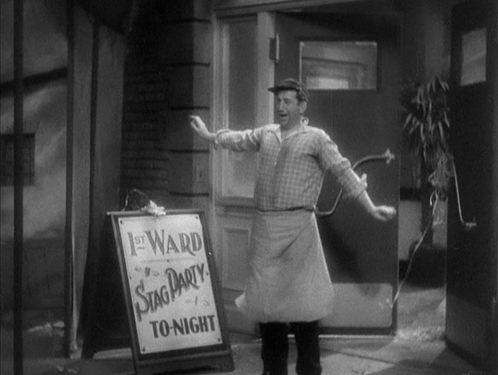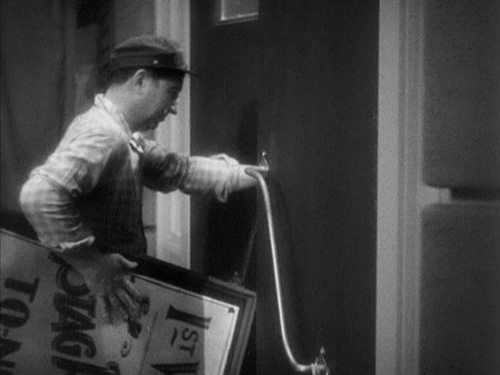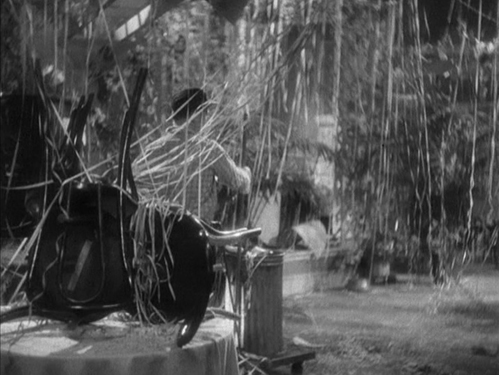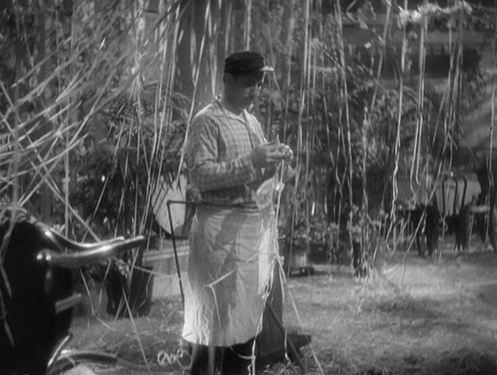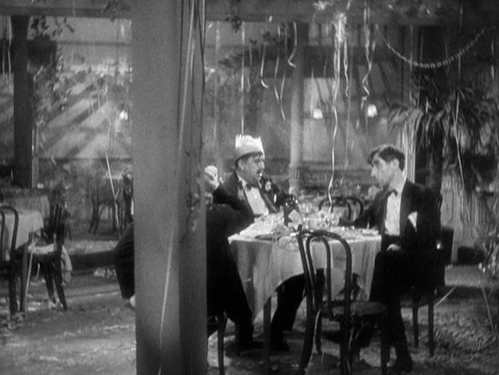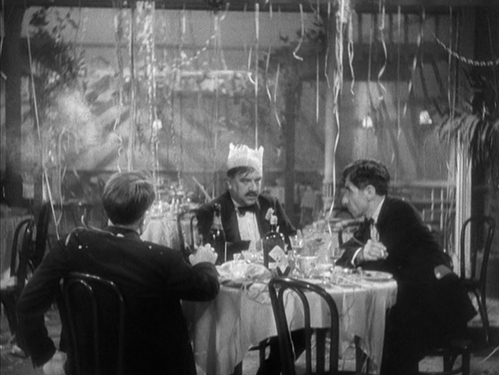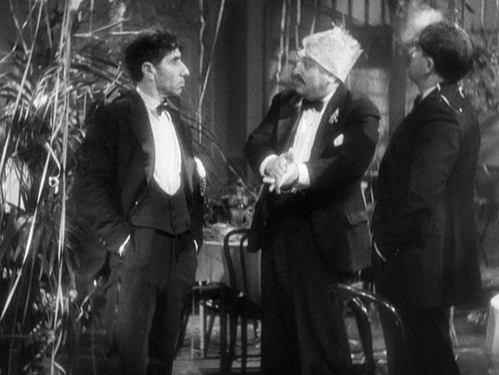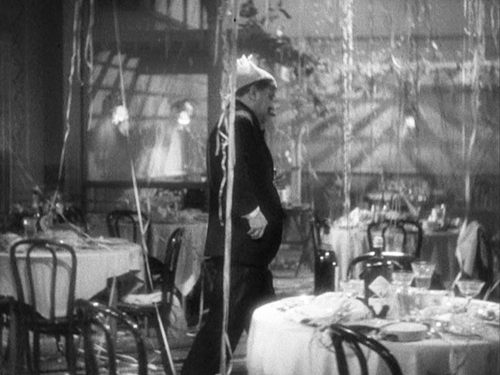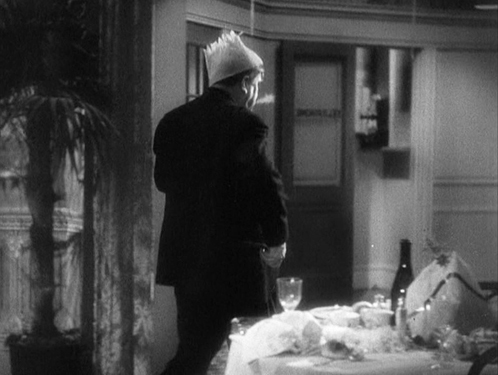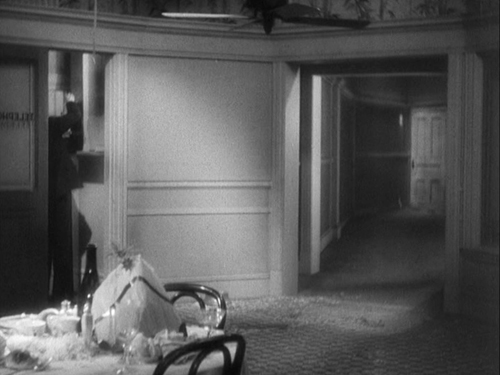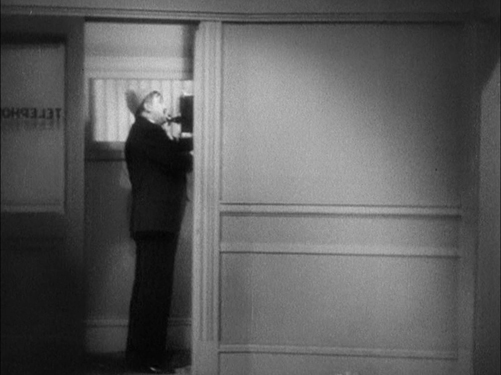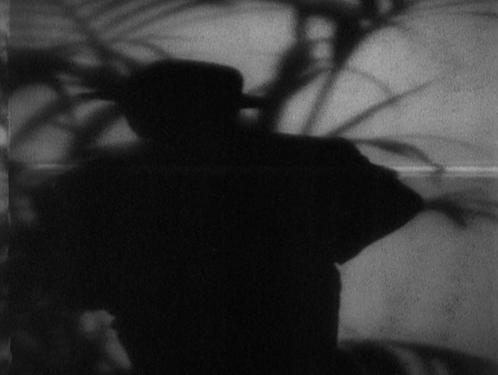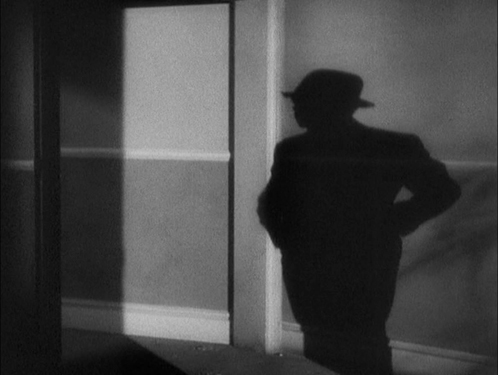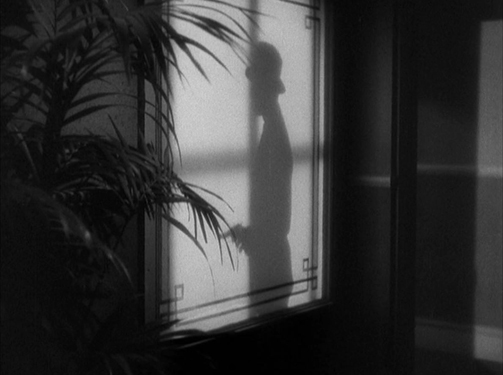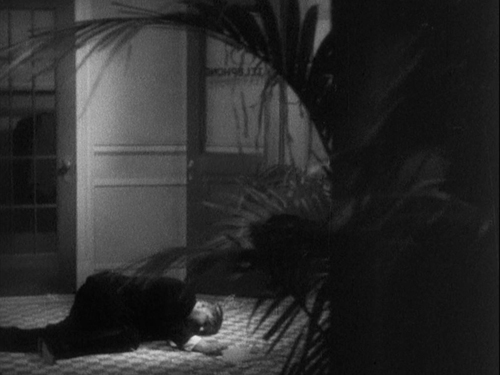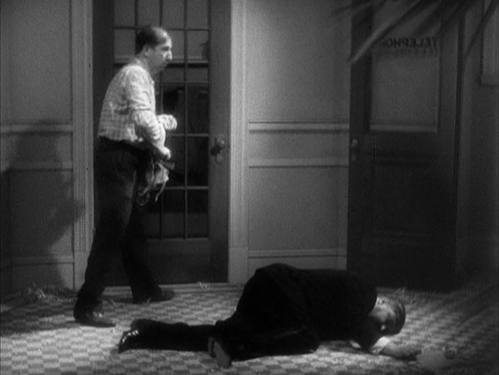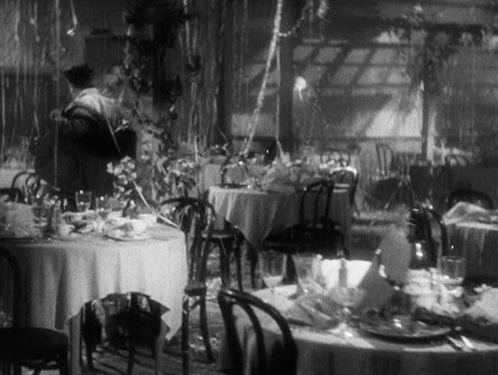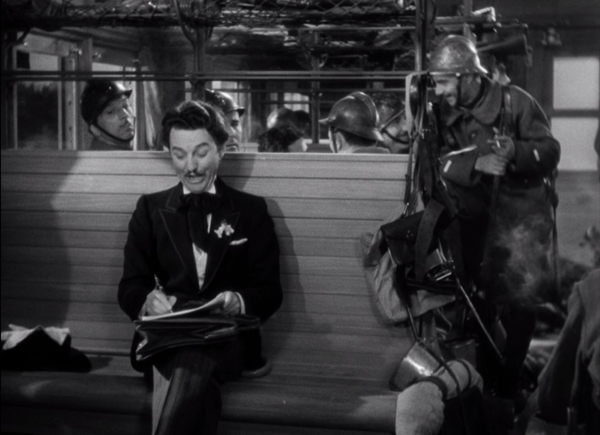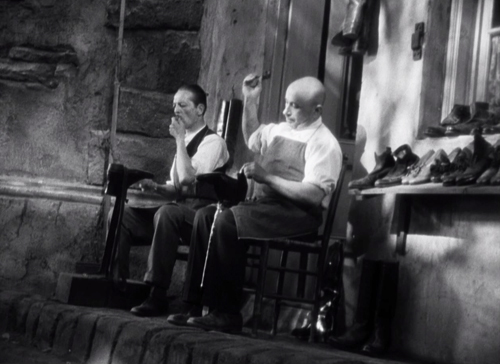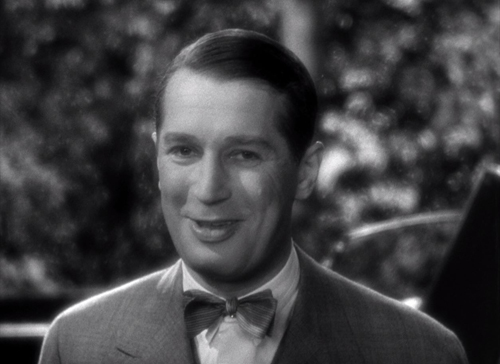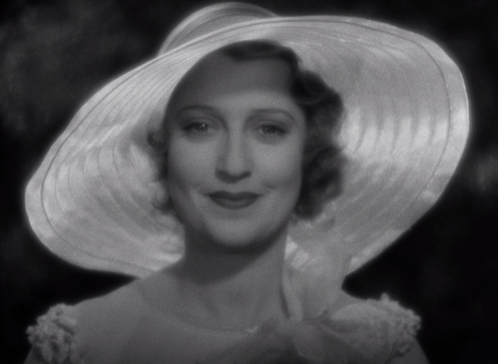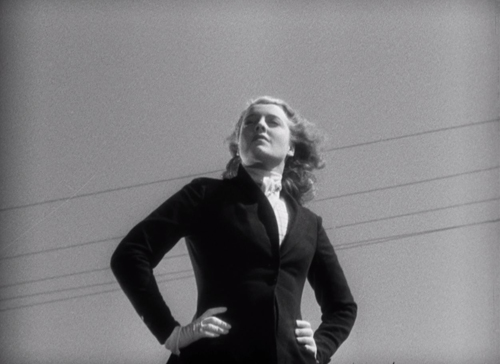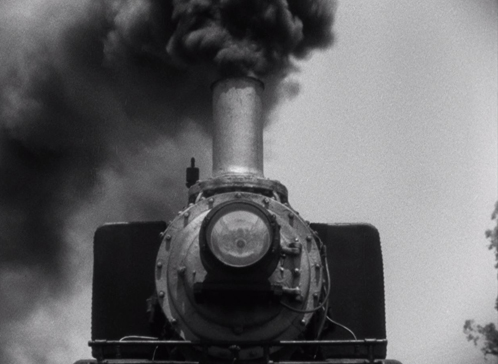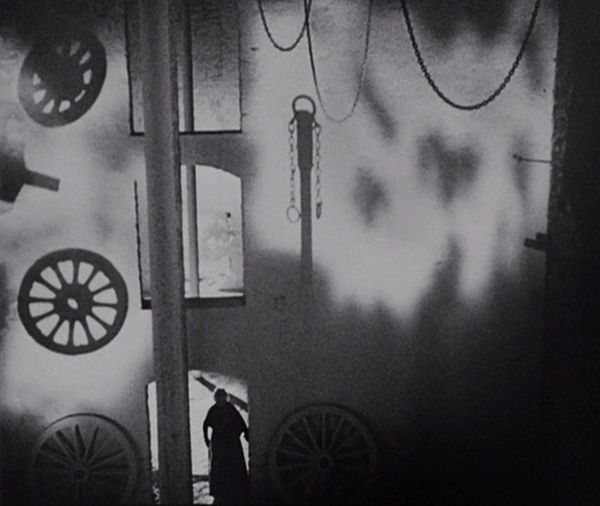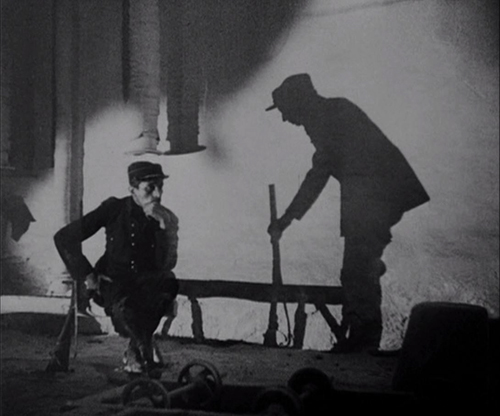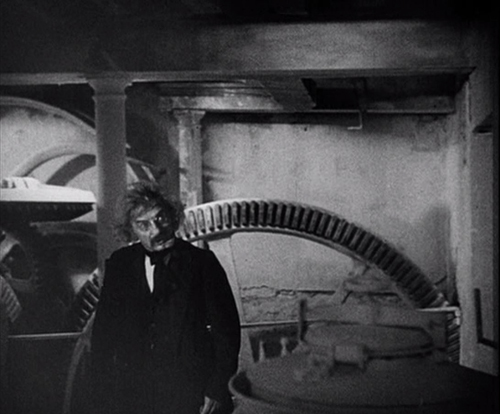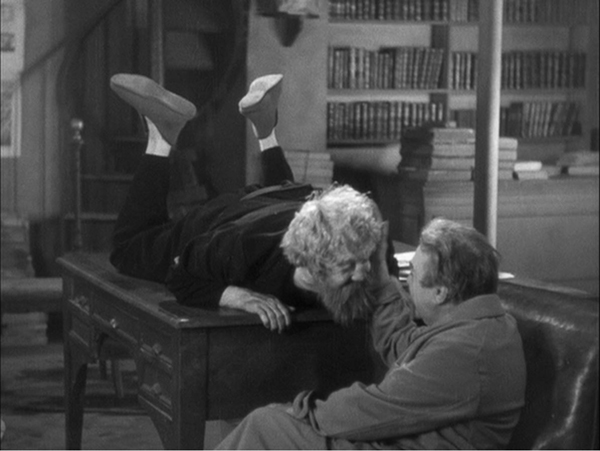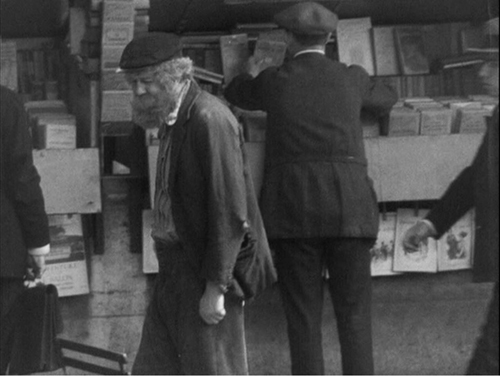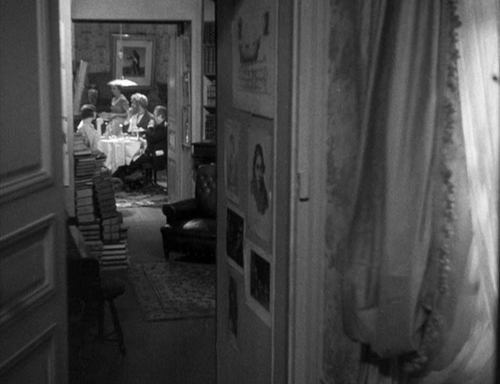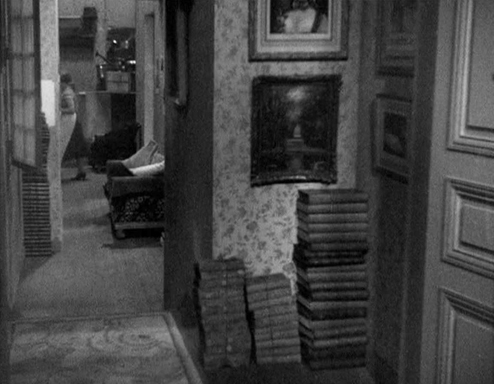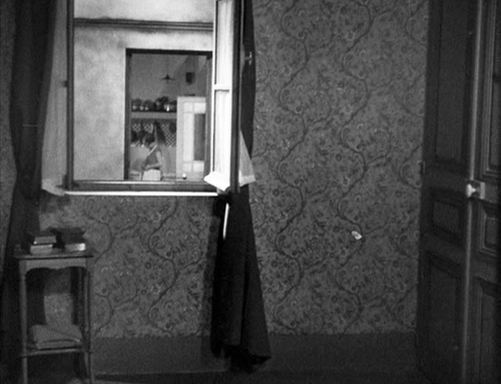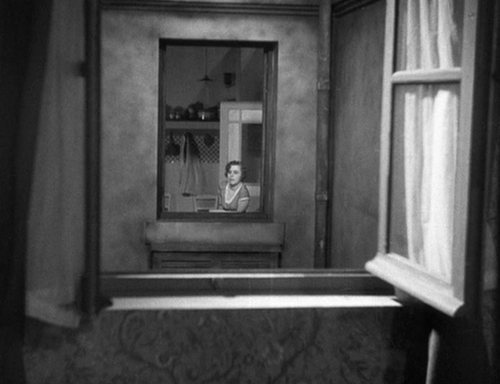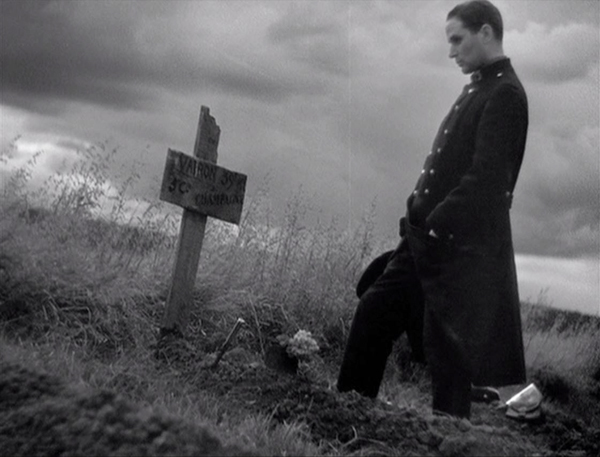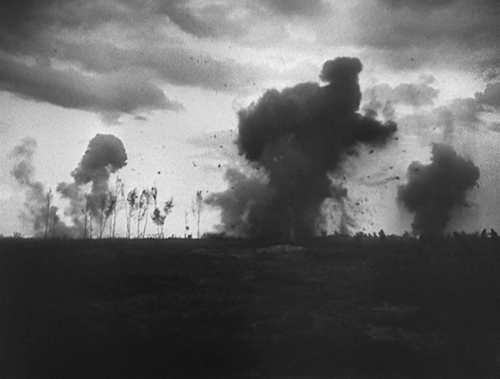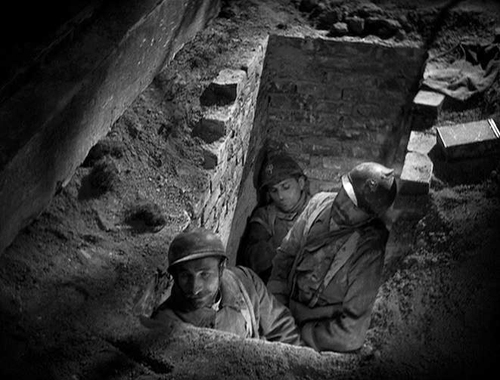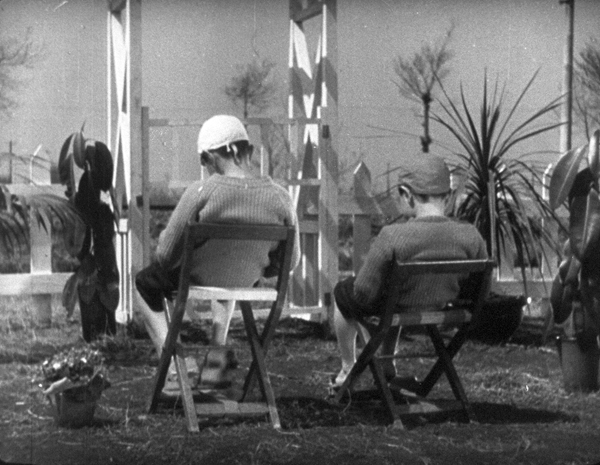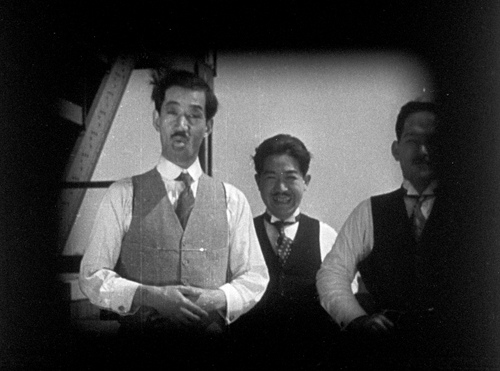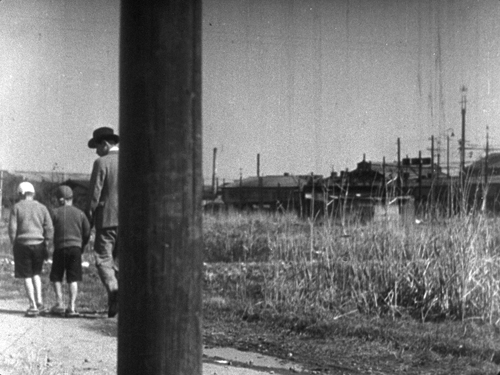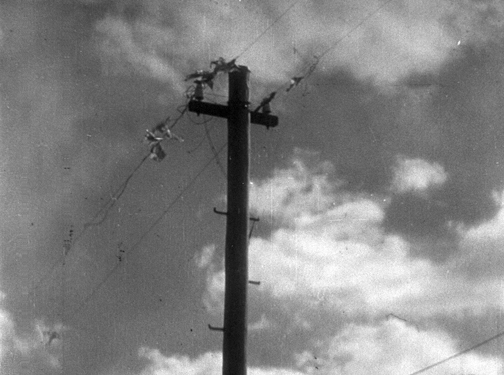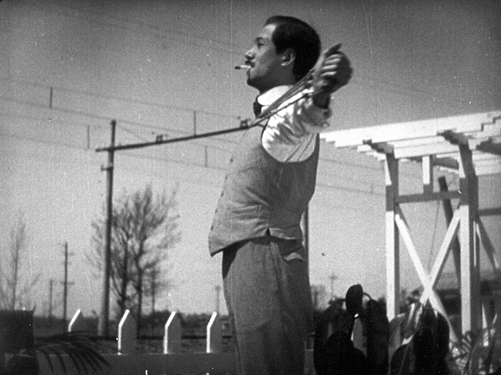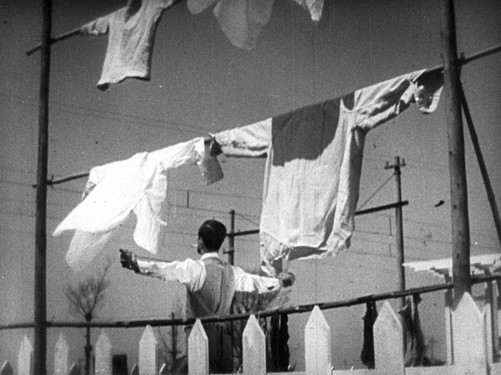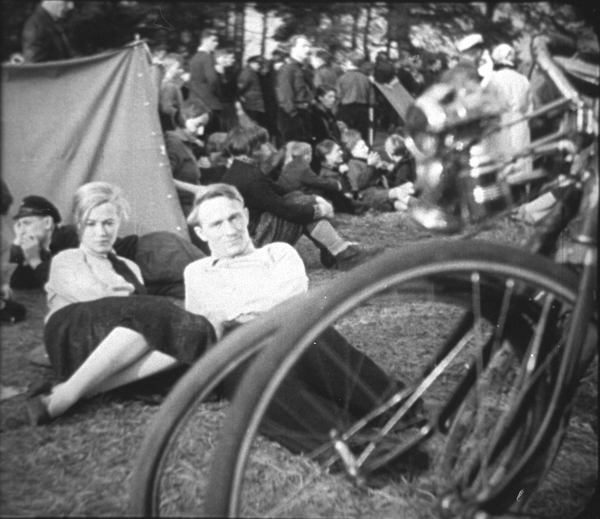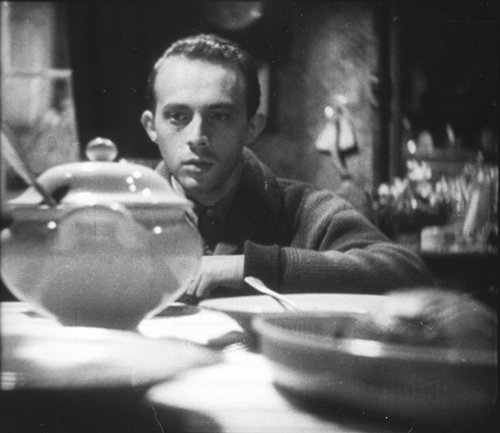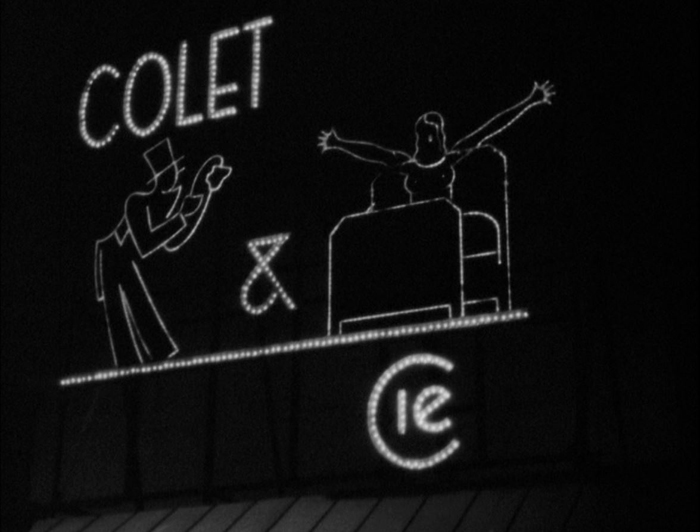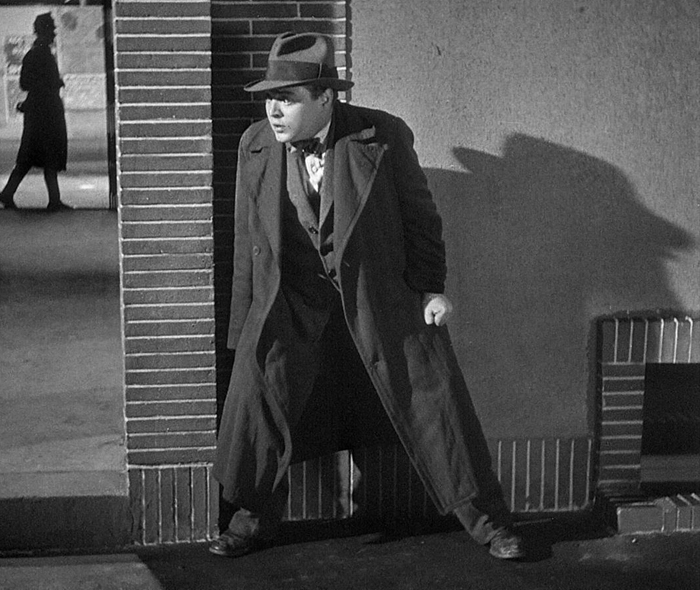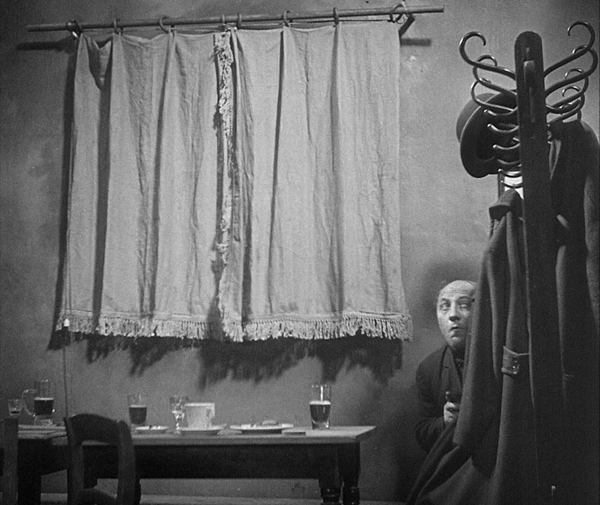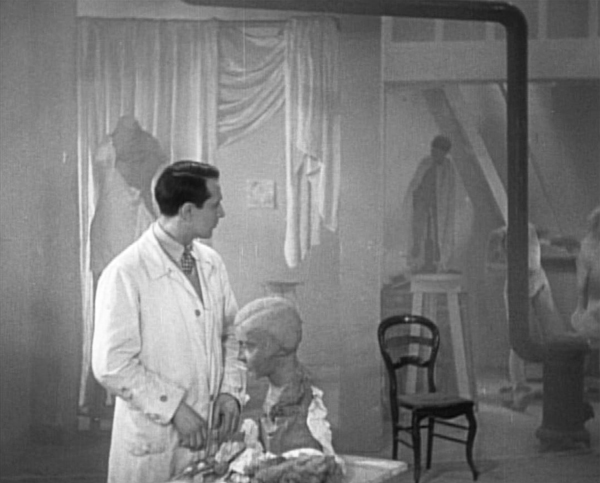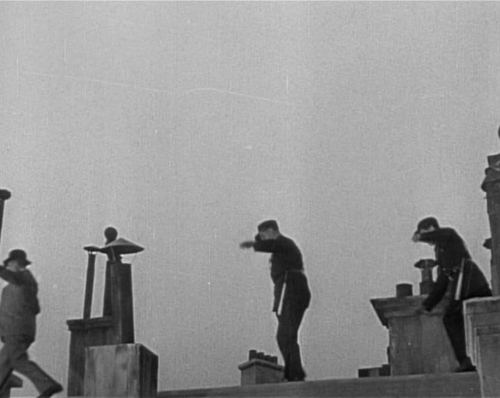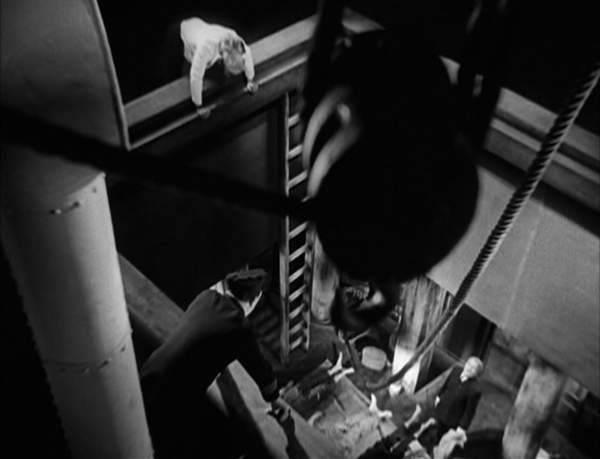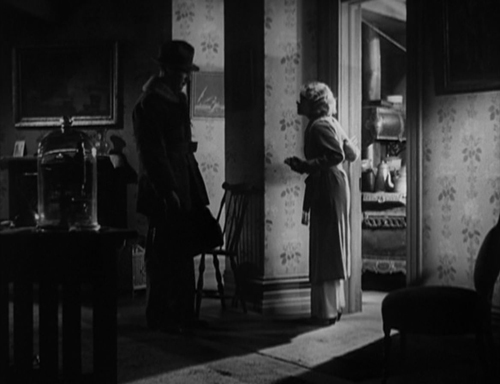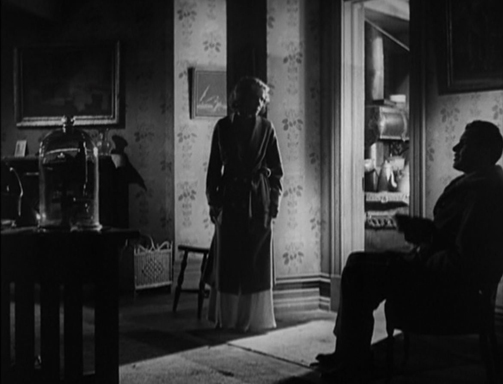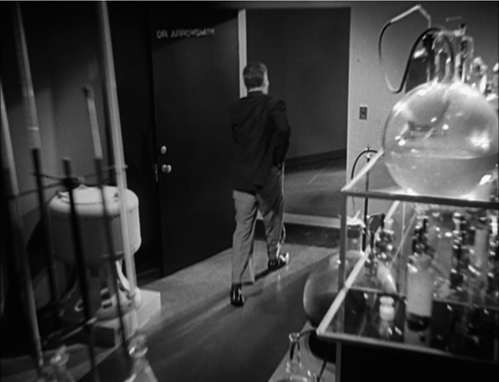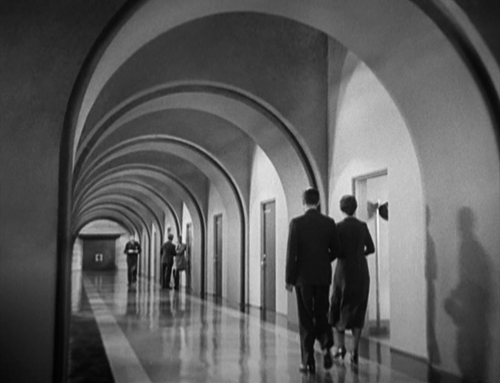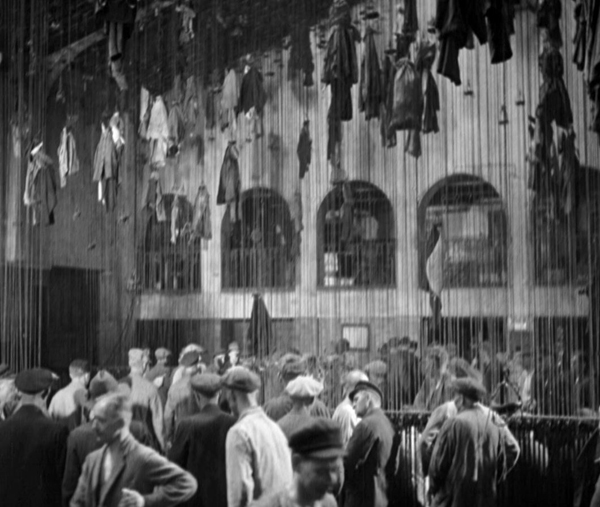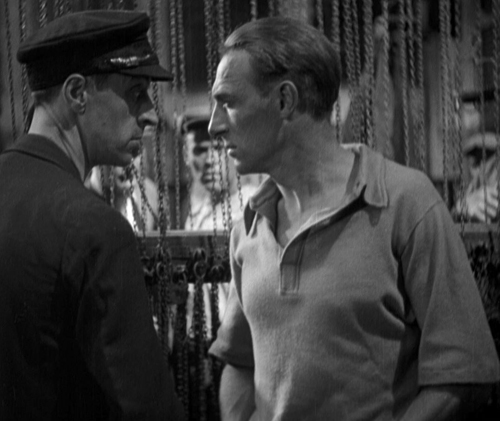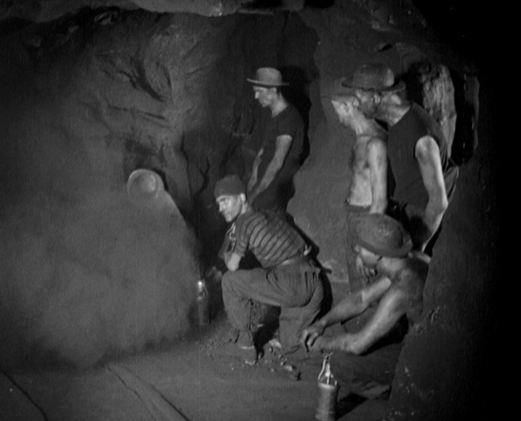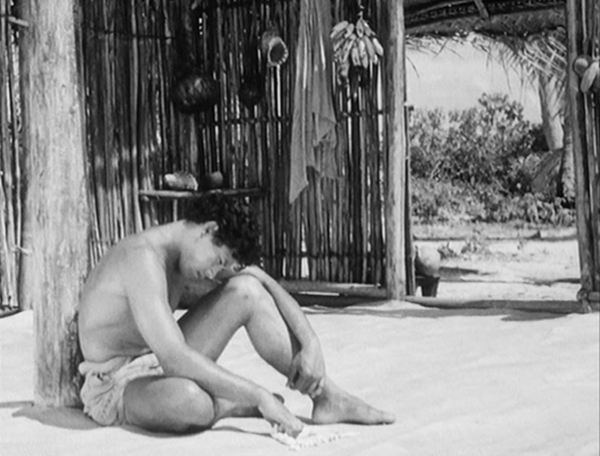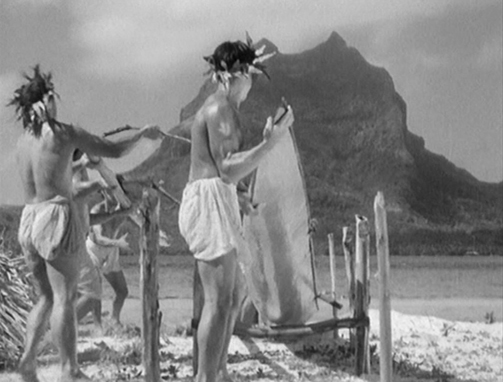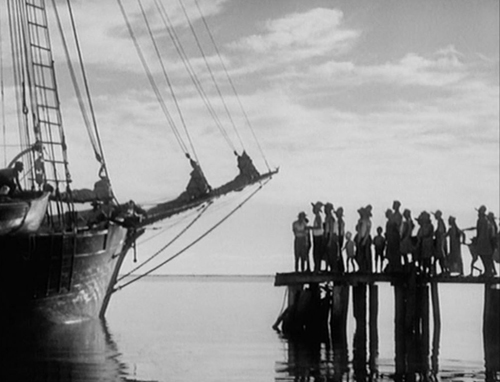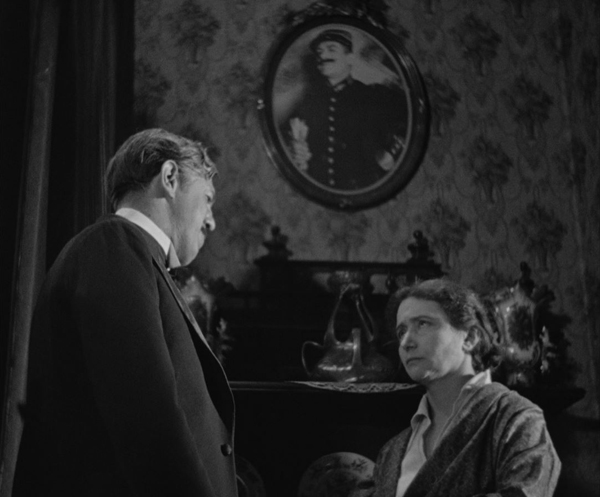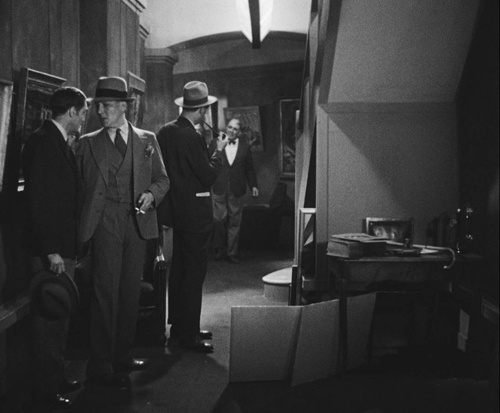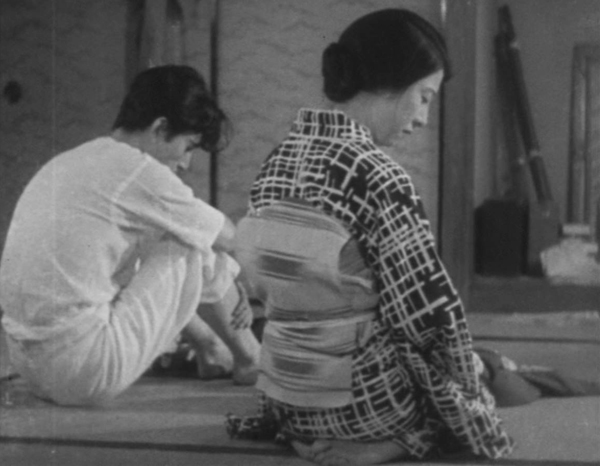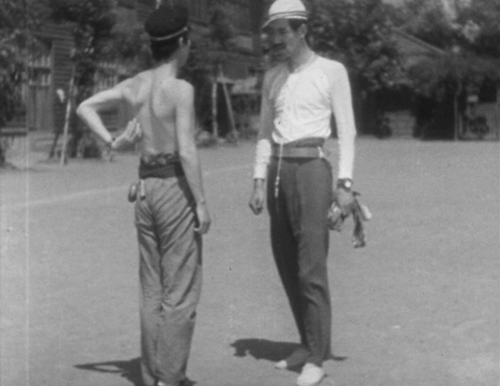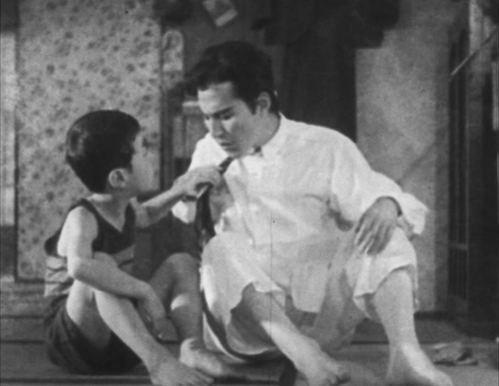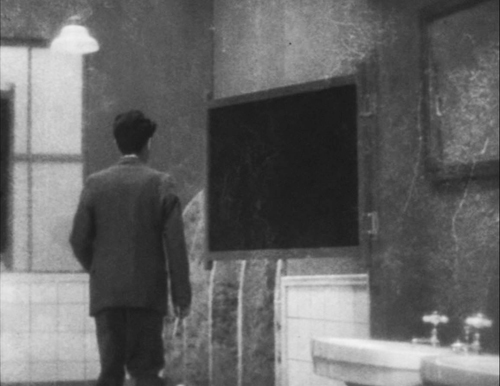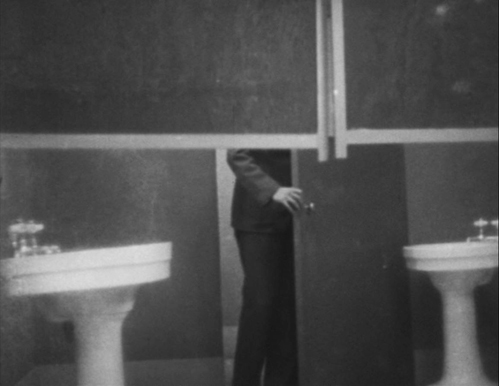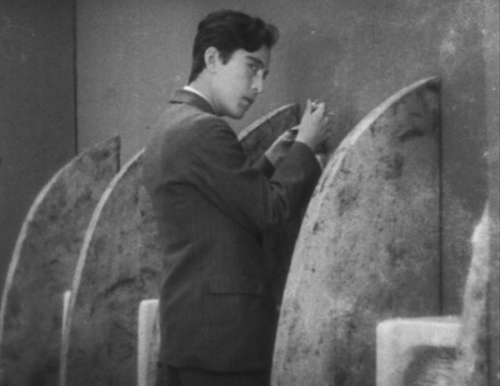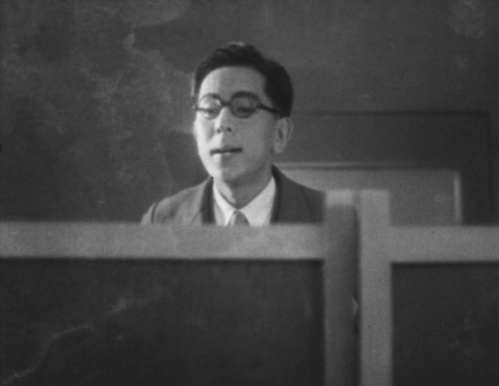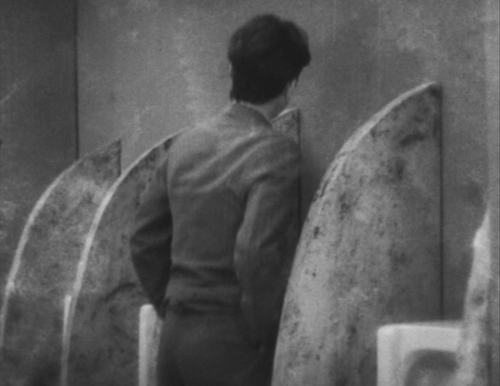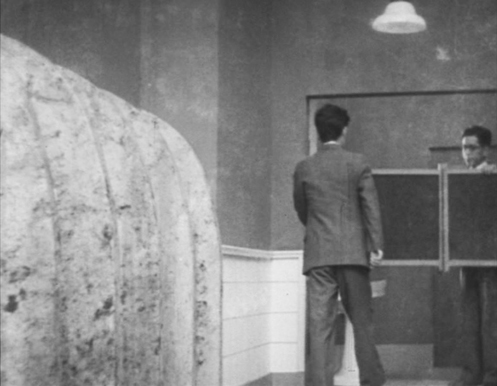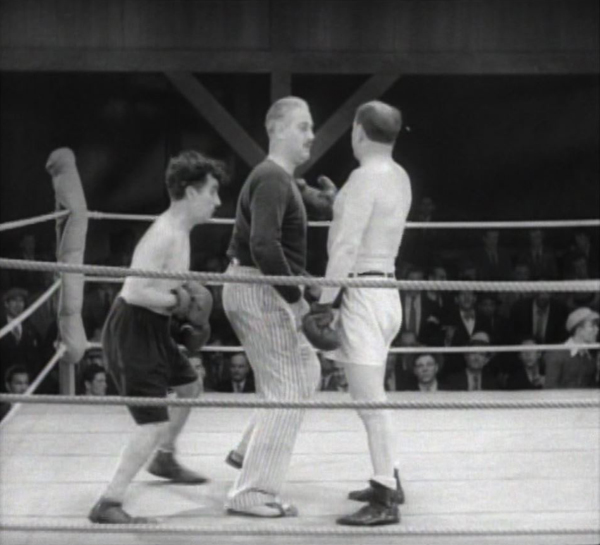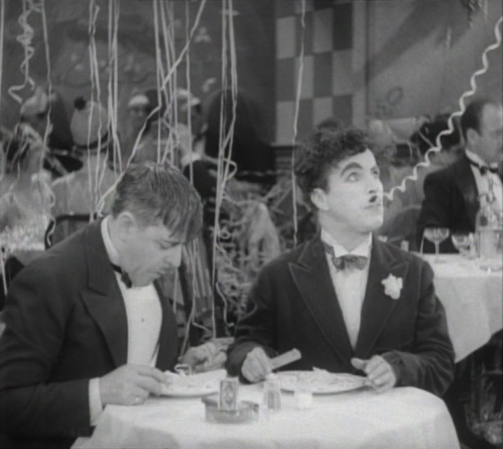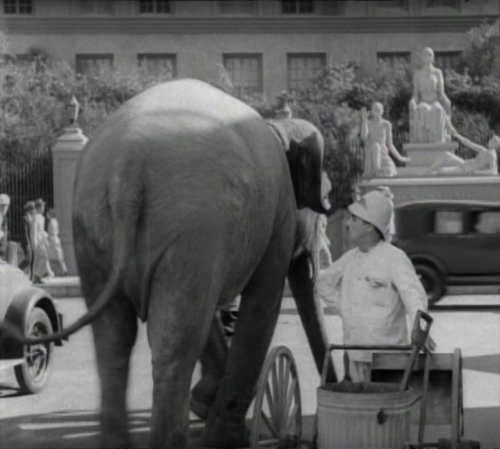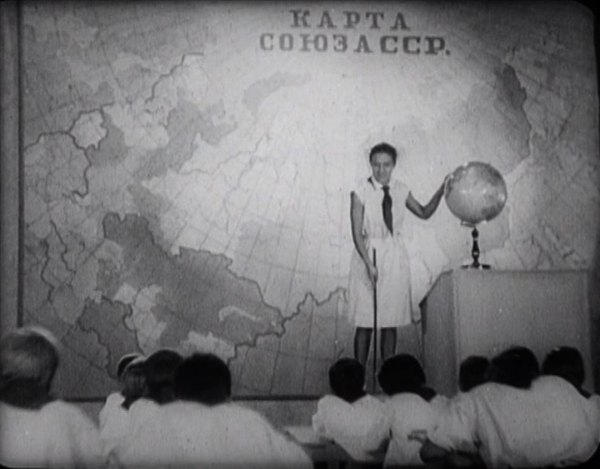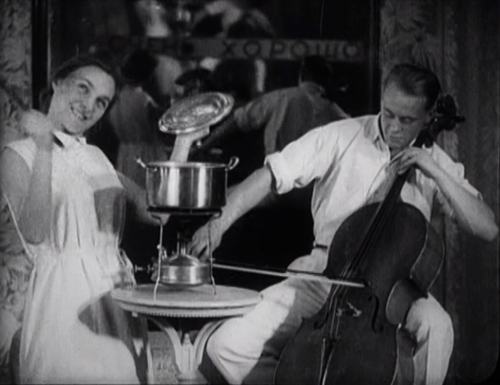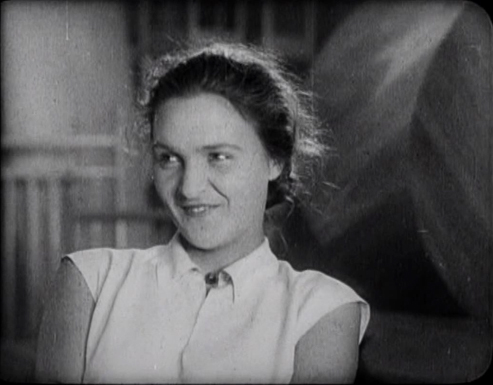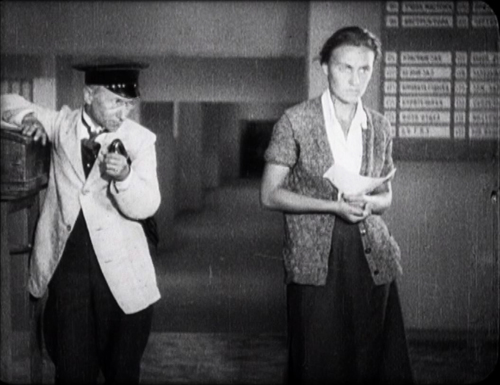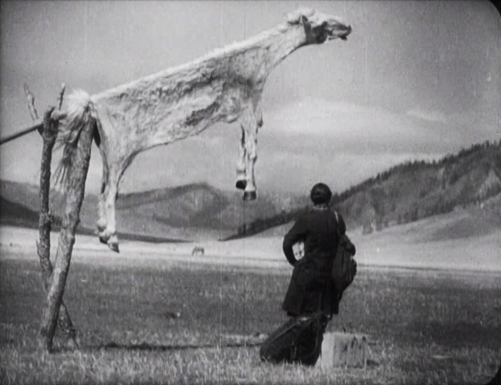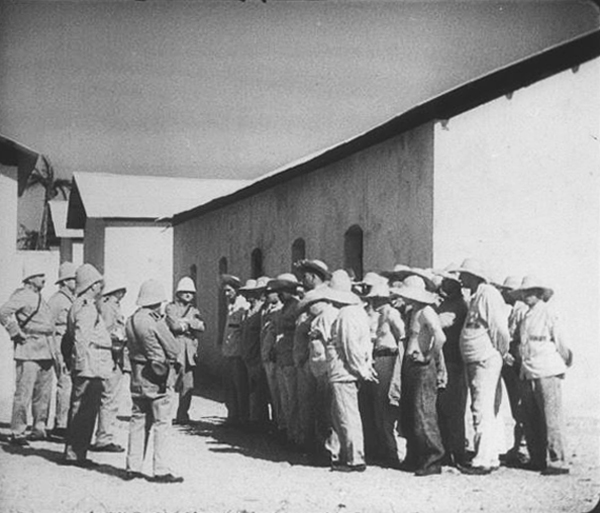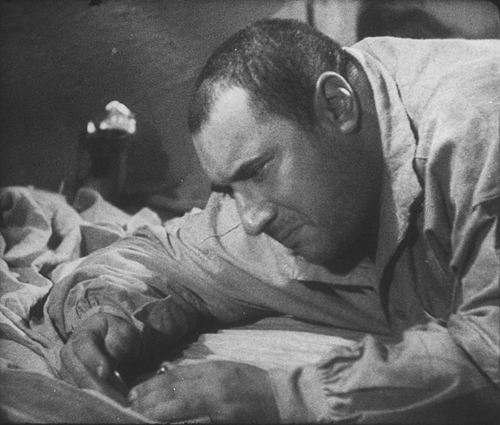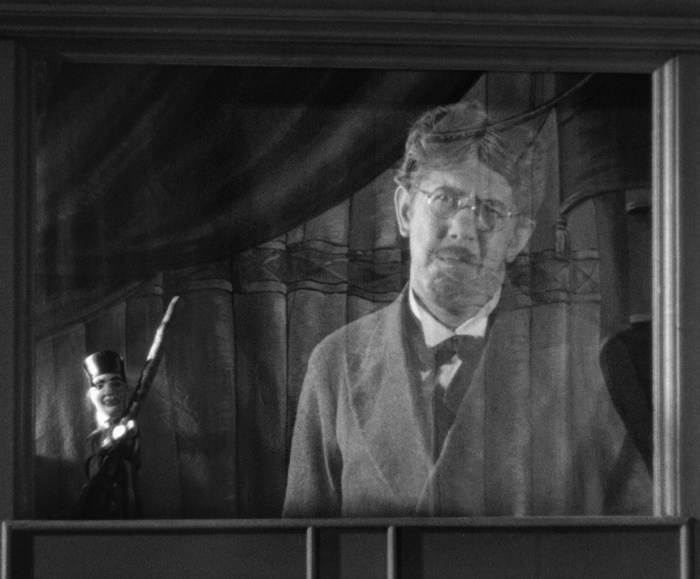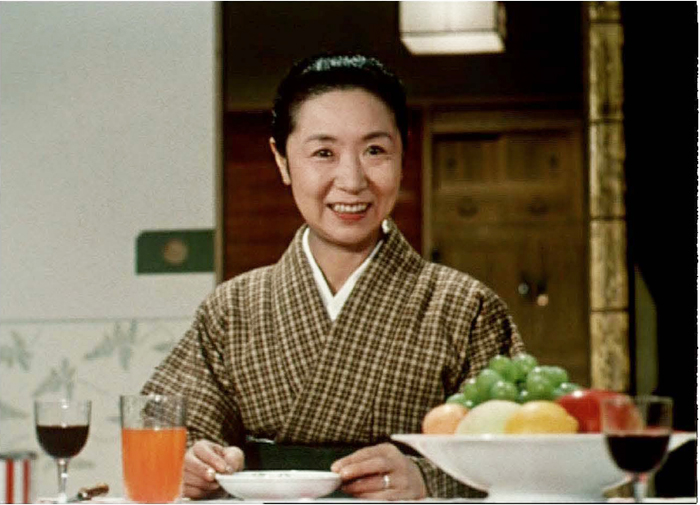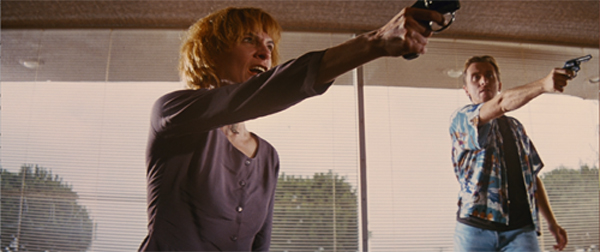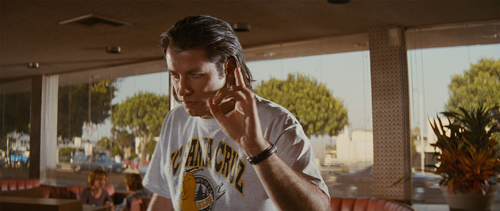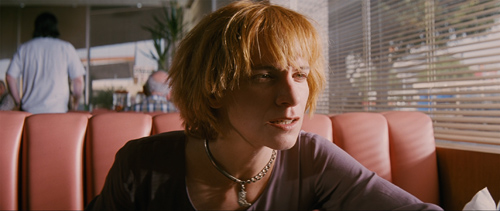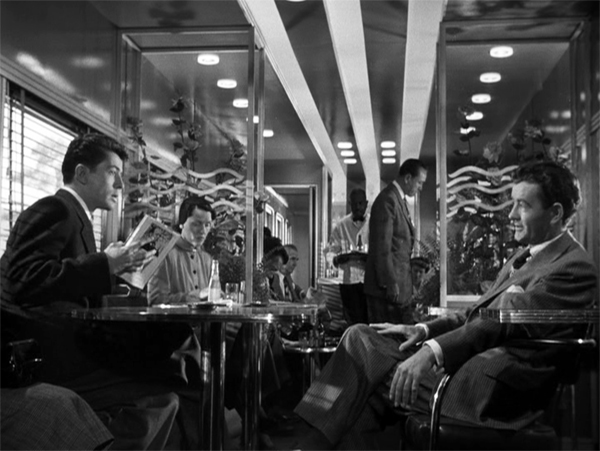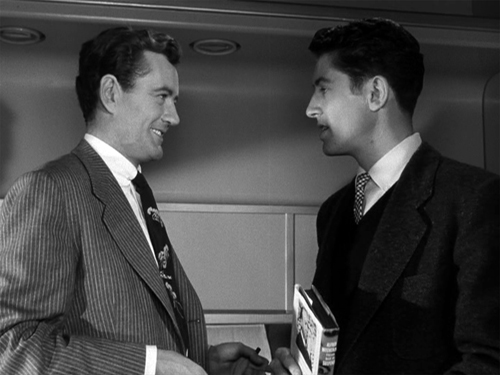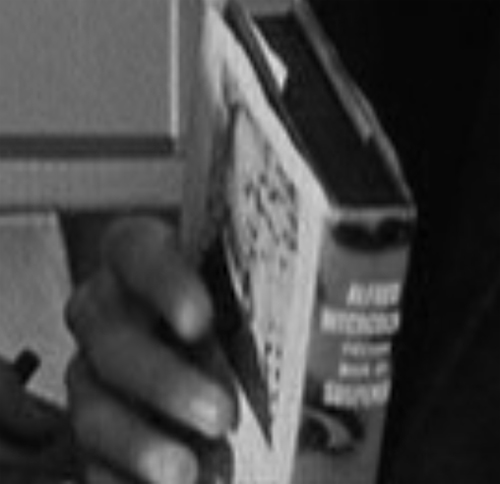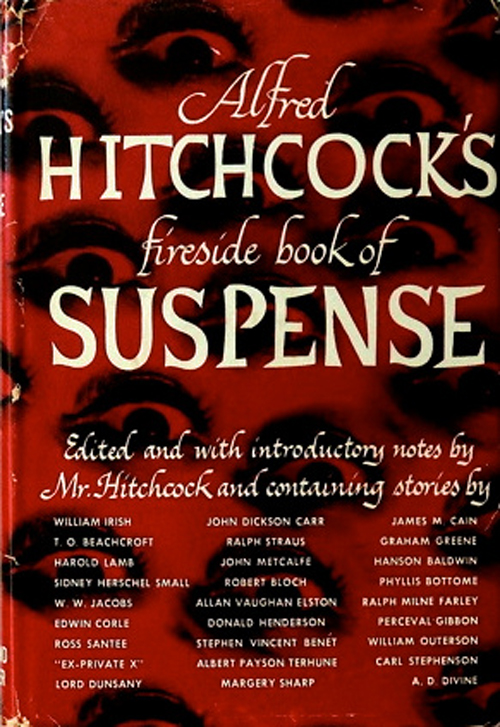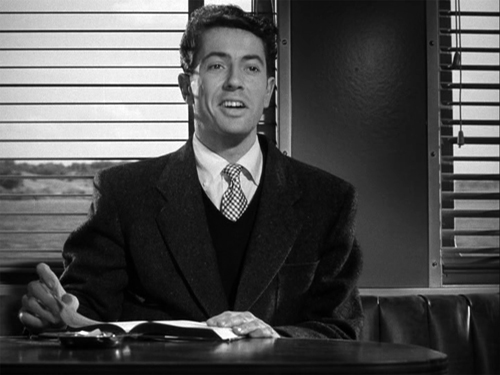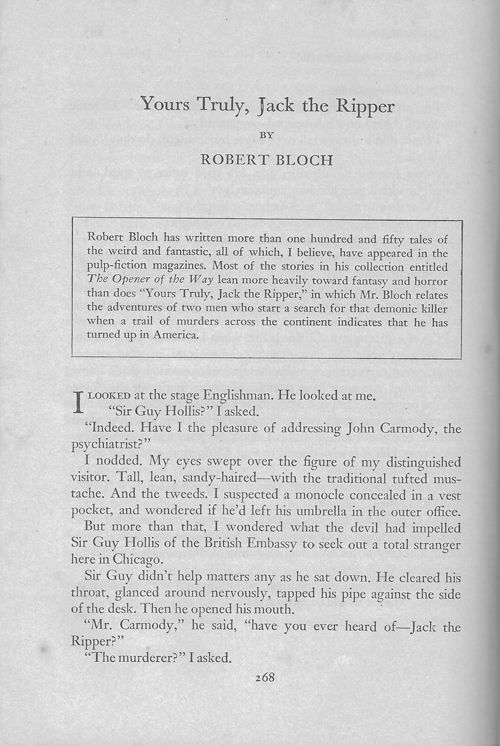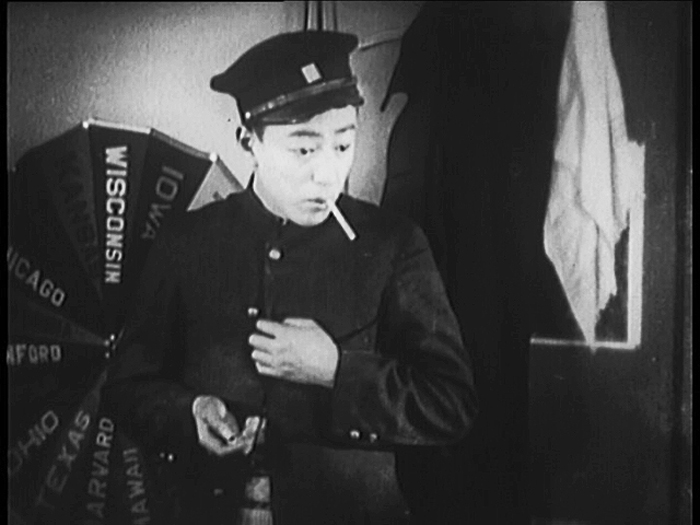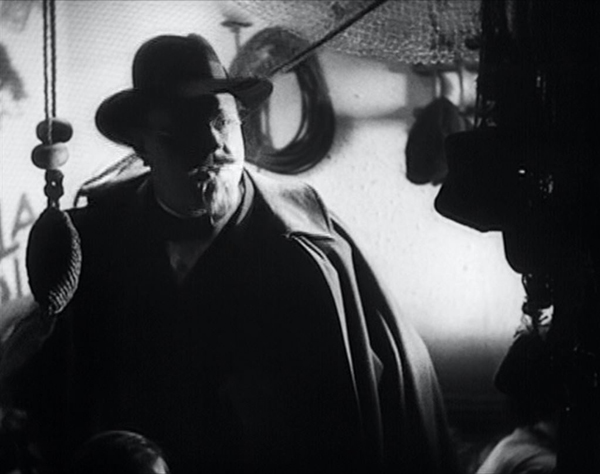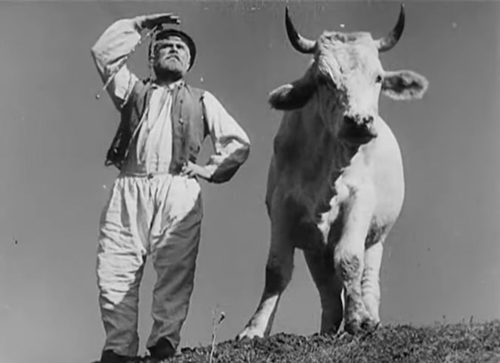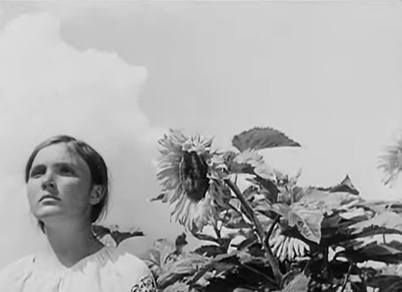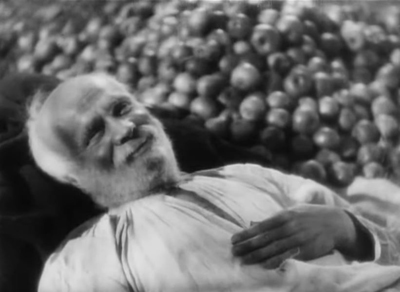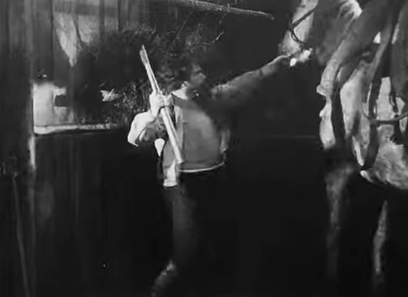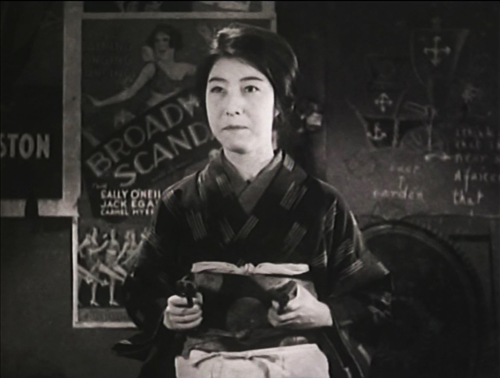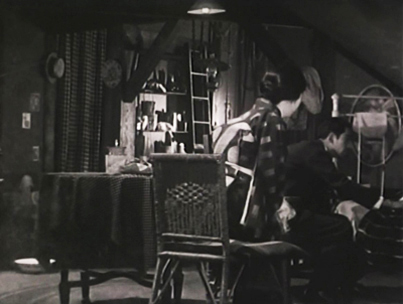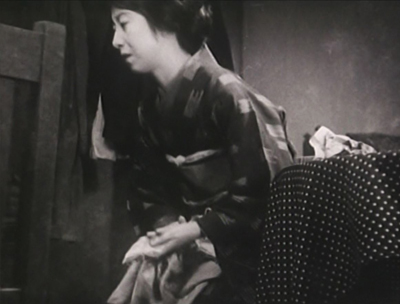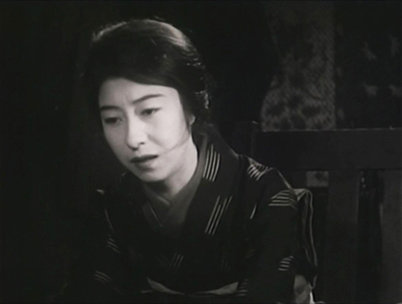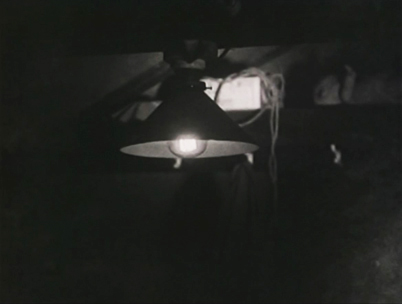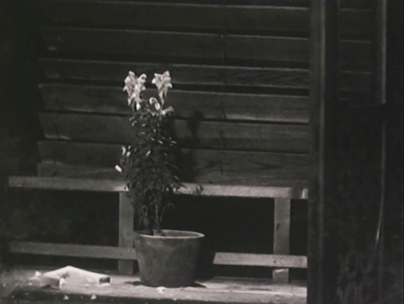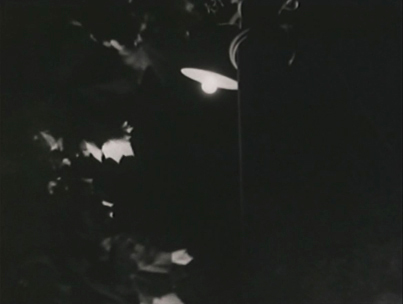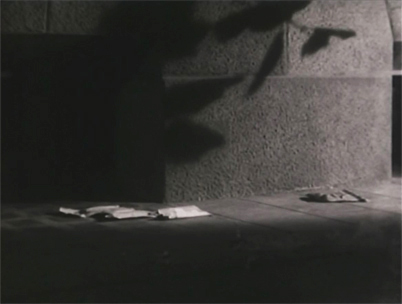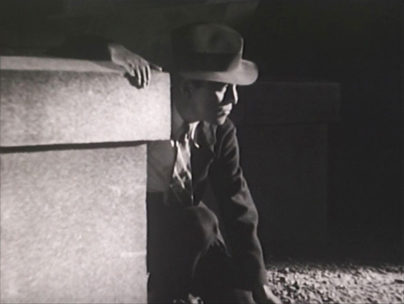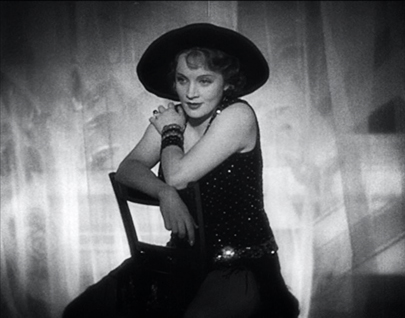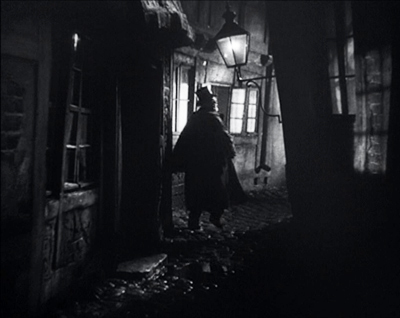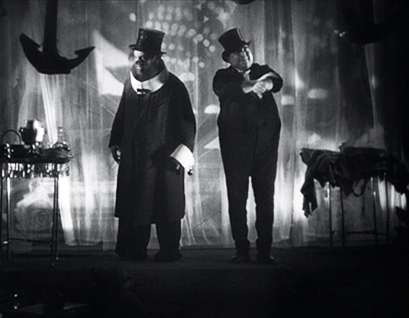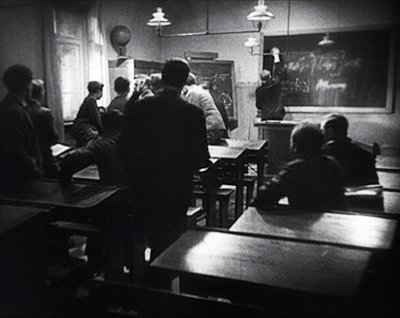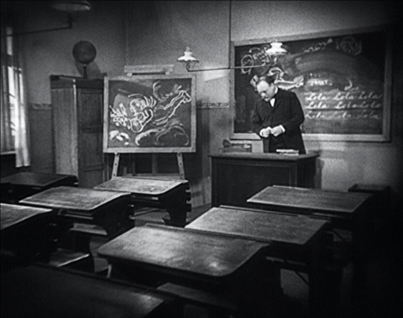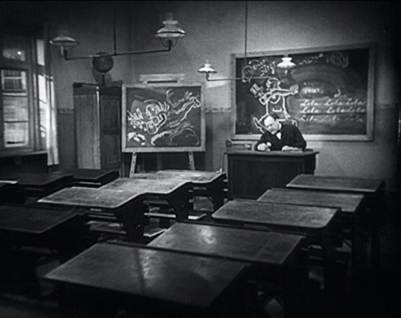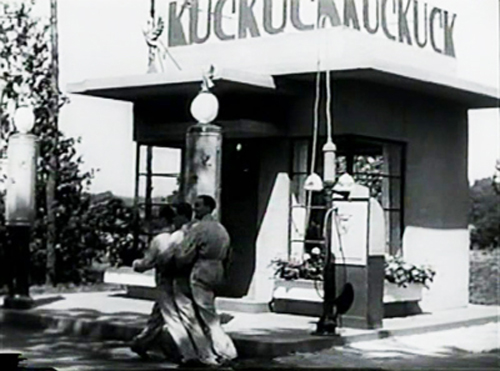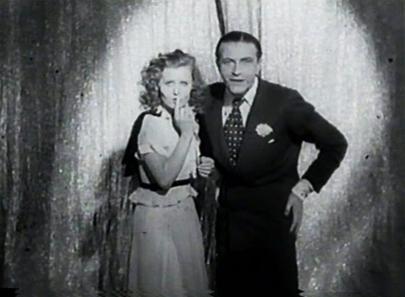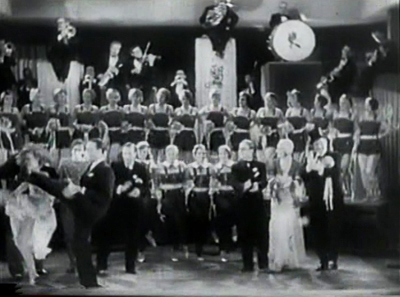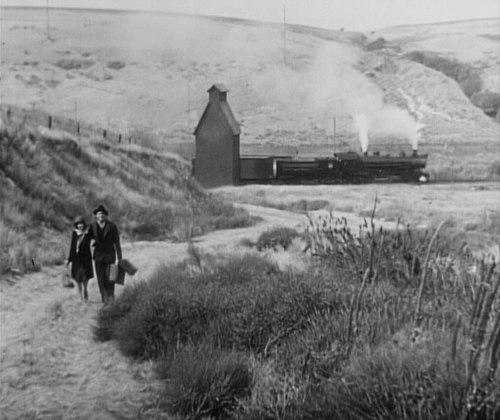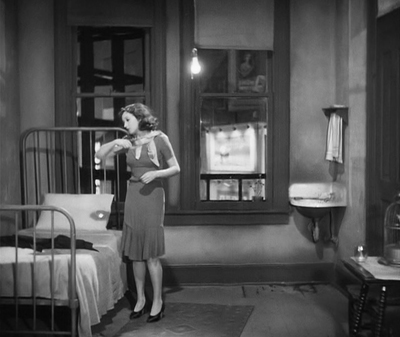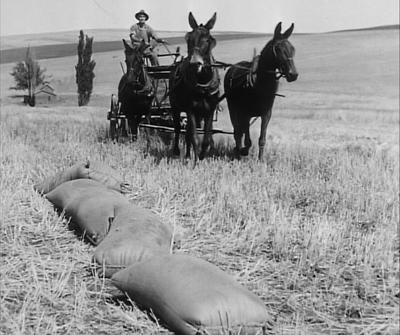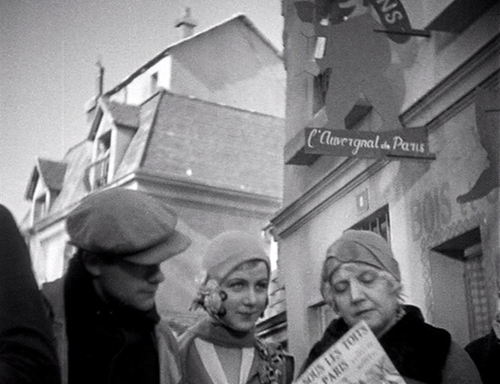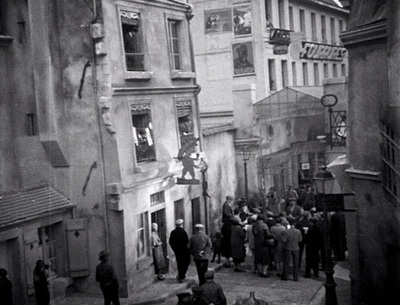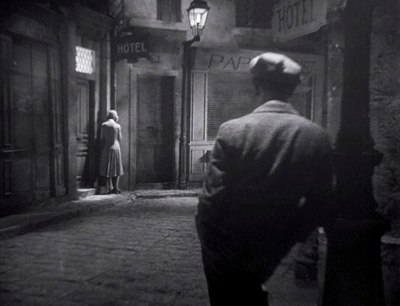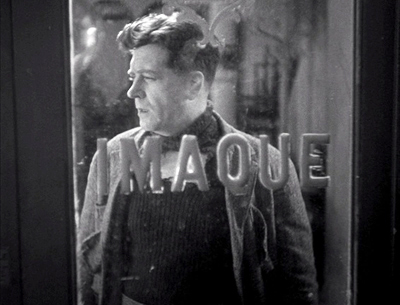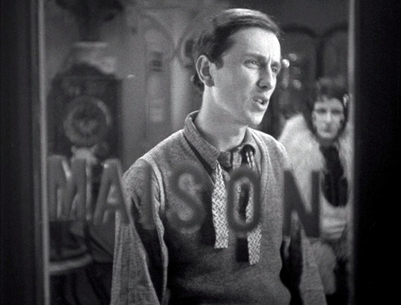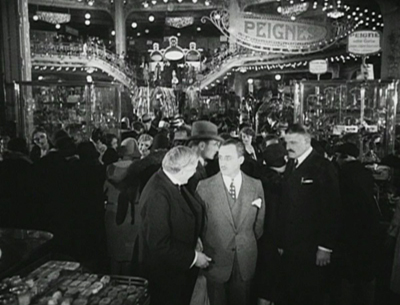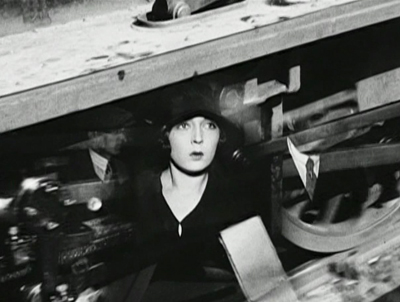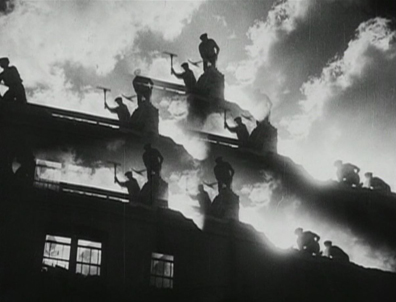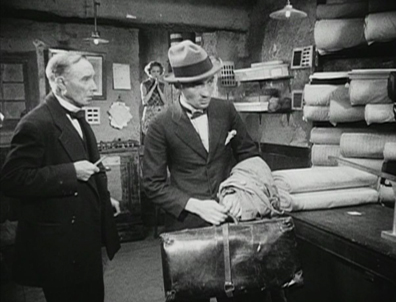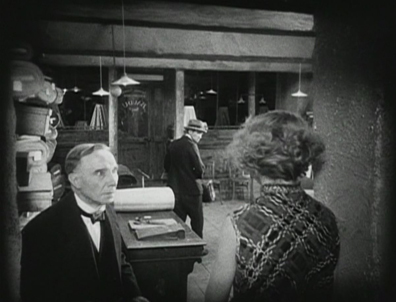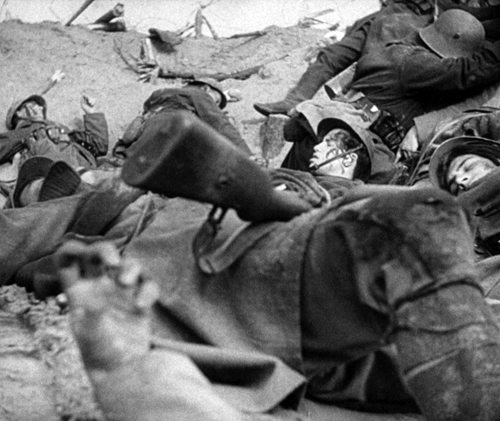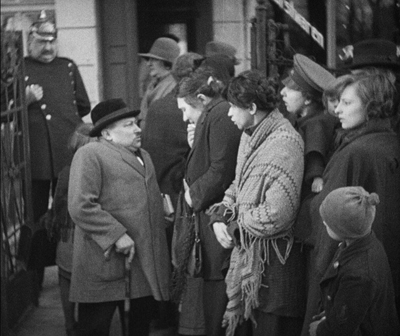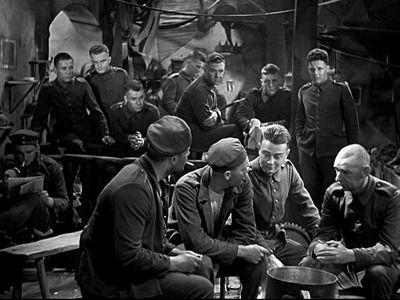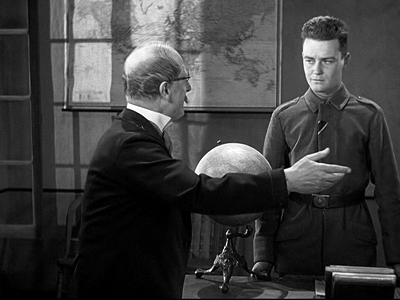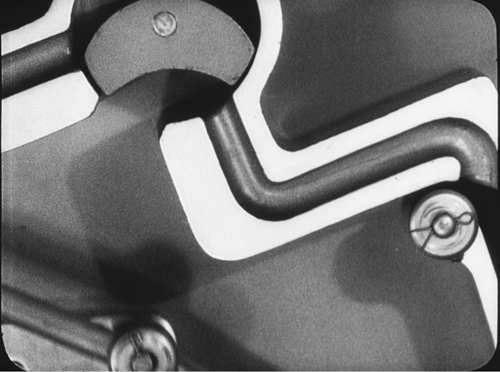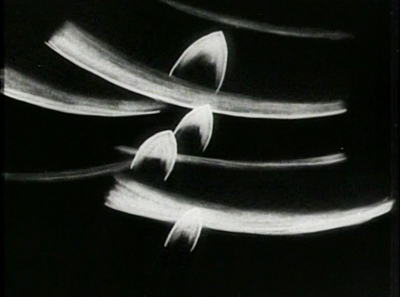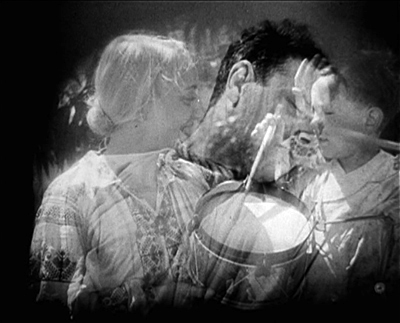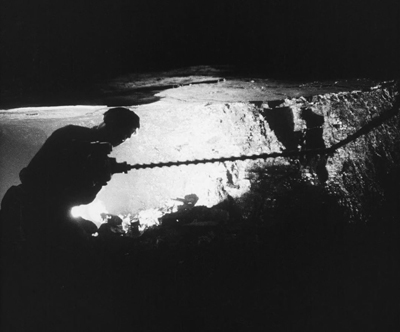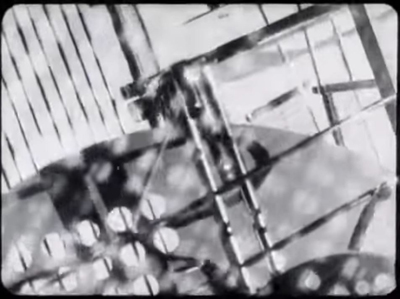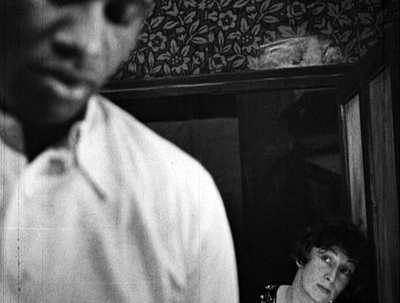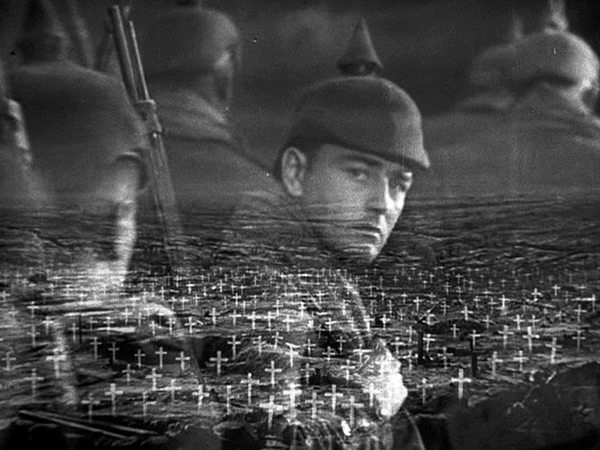Archive for the 'Directors: Ozu Yasujiro' Category
The ten best films of … 1932
Shanghai Express.
Kristin here–
The year draws to a close, and the internet abounds with lists by professional critics, educated fans, and clueless people proffering opinions on the ten best films of 2022. David and I avoid this custom, but fifteen years ago I stumbled into a habit of listing the ten best films of ninety years ago. Such films have by now stood the test of time, and they have one enormous advantage: no one is speculating about many Oscar nominations each will get.
Back in the day, only two of the films on my list got nominated at all, and those two collected a total of three Oscars. (For a hint at one winner, see the image at the top. He will feature prominently in this year’s list.)
These ten films are of course my own choices, and for those who disagree, they are quite welcome to make their own lists.
As usual, my list is a mix of very familiar titles and some not so familiar ones. My hope is to call attention to unfamiliar films that are well worth a look. Actually this year nine of the films should be familiar to any serious film student or fan, but the tenth is a masterpiece that deserves to be rescued from obscurity.
Most historians seem to agree that 1932 was the year when Hollywood emerged from the difficult transition to sound and made polished movies that regained the fluidity of cinematography, staging, and editing that had been lost to some extent. In The Classical Hollywood Cinema, Janet Staiger, David, and I proposed that the transitional period lasted from 1928 to 1931.
The same was not internationally true, however. My list contains one silent film, since the Japanese industry went through a considerably longer transition. No wonder that half of this year’s list atypically consists of Hollywood movies.
Previous entries can be found here: 1917, 1918, 1919, 1920, 1921, 1922, 1923, 1924, 1925, 1926, 1927, 1928, 1929, 1930, and 1931.
As usual, I’ll try to point readers toward the best available Blu-rays or DVDs. Those who prefer streaming should be able to find these titles for themselves. David and I prefer discs, at least for important films. With the decline of access t0 35mm and 16mm prints, studying films closely has become more dependent on discs (which also still have better quality images than streaming). Eventually, with streaming the only option obtaining frame grabs of the sort that illustrate these entries, close film analysis will become extremely difficult.
Hooray for Hollywood!
Trouble in Paradise
Ernst Lubitsch is one of the best-loved of film directors, both within the film industry and among cinephiles. I was lucky enough to be invited to teach a one-month summer course at the University of Stockholm on any topic related to silent cinema. I jumped at the chance to follow up on a vaguely planned project on Lubitsch, specifically a comparison of his German and American silent films. The course became a book, Herr Lubitsch Goes to Hollywood, now out of print but available through open access.
Trouble in Paradise is widely considered his best film, though I would say that at least Lady Windermere’s Fan and The Shop around the Corner are equal to it and others are not far behind.
The witty script is a model of sophisticated humor, and the casting is perfect. Herbert Marshall for a change got to play the suave hero, a dazzlingly expert crook who teams up romantically with Miriam Hopkins, his match as a wily pickpocket. In this 82-minute film, their hilarious courtship in a Venice hotel runs for a remarkable 17 minutes as they top each other in stealing things from each other, with her returning his watch and his flaunting her garter:
It doesn’t seem a minute too long. Essence of Lubitsch.
Kay Francis provides the potential trouble that threatens their idyllic life of thievery; she’s a beyond-wealthy owner of perfumery Colet & Cie. (see bottom)–so wealthy that she doesn’t really mind that her “secretary” may be a famous criminal worming his way into her confidence. Charles Ruggles and especially Edward Everett Horton provide hilarity as hopeless suitors wooing Madame Colet.
The comedy is played out in shining art-deco sets (above), lit with perfect three-point Hollywood lighting. As I demonstrate in my book, Lubitsch moved effortlessly from being the master of German silent film style to being the master of Hollywood style. It shows in every aspect of Trouble in Paradise.
The Criterion Collection DVD is still available.
Shanghai Express
The Josef von Sternberg/Marlene Dietrich teaming. The Blue Angel, featured on my list in 1930. The pair famously made a series of Hollywood films together, all built around the glamor of Dietrich. For me, the best of the bunch is Shanghai Express. It has a stronger script than the others, being set on a train traveling from Beijing to Shanghai during the Chinese Civil War (which had started in 1927). The device of a group on a journey lends the film both unity and suspense. It’s basically a thriller with a romance included. There are more characters than in some of the other Dietrich films, the typical bunch of eccentrics for such journey-plots lending interest, humor, and pathos along the way. Dietrich’s character is strong and likeable. She pursues the man she loves, but on her own terms while he stands around cluelessly keeping his upper lip stiff.
Then there are the incredible visuals. The set design is even more dense than usual for a von Sternberg film. The train windows, both exterior (top) and interior (above) are used brilliantly, and the rebel headquarters where the group is trapped for much of the second half has hanging gauze and stairways that create a complete contrast with the train scenes.
And the Oscar mentioned above went to … Lee Garmes, whose five films in 1932 also included Scarface (see below). Apart from his photography of the settings, he shows off with with other dazzling moments, including an extraordinary tracking shot following an official along the crowded platform for nearly the entire length of the train.
Needless to say, the glamor shots of Dietrich are among the most beautiful ever (Garmes also shot Morocco and Dishonored).
In general, the train station scenes are spectacular and give a remarkable sense of authenticity. Speaking of which, all the extras and minor characters seem to be played by Chinese, or at least Asian people. Anna May Wong has a prominent role as Hui Fei. Whether casting Warner Oland as the rebel leader Henry Chang would count today as “whitewashing” is up for debate. He was born in Sweden but claimed some Mongolian ancestry (so far unproven).
The Criterion Collection has the set of six Dietrich/von Sternberg films on Blu-ray and DVD. (My frames were pulled from an old TCM DVD pairing the film with Dishonored. TCM now offers Shanghai Express by itself on DVD or Blu-ray.)
A Farewell to Arms
The second Oscar-winner of the three mentioned above was Charles Lang, for his cinematography of A Farewell to Arms. (The film also won the third Oscar, for sound recording.)
Frank Borzage has been a staple of these ten-best lists, with Lazybones (1925), 7th Heaven (1927), and Lucky Star (1929). This may be his final appearance in these year-end lists, with growing competition internationally.
A Farewell to Arms adapts Hemingway’s novel of World War I. Gary Cooper plays Frederic, an ambulance medic who spends his spare time drinking and visiting brothels with his friend, Italian Dr. Rinaldi (Adophe Menjou). He meets Catherine, a nurse, at a party, and they fall immediately in love, succumbing to passion under the assumption that war’s uncertainties may not give them another chance. Becoming pregnant, Catherine departs for Switzerland to have the baby, but her letters to Frederic and his to her, are returned to sender. Frederic risks a firing squad by deserting and desperately trying to find her.
Like Trouble in Paradise and other 1932 films, A Farewell to Arms benefited from the fact that the self-censorship Hollywood studios instituted under the Production Code (aka the “Hays code”) in 1933 was not yet in force. The result is a grittier and more honest look at life in wartime than would be possible in later years. Apart from the quite restrained brothel scene (above), there is considerable emphasis on the forbidden unwed motherhood rife among the nurses Catherine works with.
The two stars make a convincing romantic couple of the kind Borzage had become famous for, and the cinematography is lovely. Lang, too, was an expert at creating glamorous images.
Amazon would very much like you to watch the film for free with ads or with a subscription to Paramount+ or with a free Fandor trial or by paying $2.99. Once you scroll past those enticements, you can find Kino Classics release of a Blu-ray or DVD in a remastered version by George Eastman House. It seems a bit overly dark to me, but maybe the original nitrate copy was, too.
Scarface
I have to admit that gangster films are not my favorites. Still, there are outstanding films in the genre, as the presence of von Sternberg’s Underworld on my 1927 list indicates. The early 1930s established the genre solidly, and Scarface stands out among the other classics examples of the time. I have not seen the two other such classics still commonly watched, Public Enemy or Little Caesar, for a very long time, but I recall not being very impressed.
Scarface marks Howard Hawks’s first appearance on one of my lists. It’s not up to his greatest films of the 1930s, Twentieth Century and Only Angels Have Wings (and some would say Bringing Up Baby).
One thing that makes Scarface stand out for me is its considerable use of humor, which seems unusual for a gangster film. Paul Muni, so dignified in his prestigious bio-pics of this same period, lets go and struts with aggressive arrogance, lets go in fits of rage, and makes Tony Camonte a figure of fun with his accent (“That’s putty nice”) and flaunted ignorance. When the woman he’s trying to impress and seduce remarks sarcastically that his clothes are gaudy, he delightedly takes it as a compliment.
The comic relief flirts with slapstick in the figure of Camonte’s “secretary,” who is illiterate, inept, and downright stupid. According to the AFI Catalog, his character name is Angelo, though Camonte addresses him as Dope. There’s a running gag of him being unable to get basic information from callers. At one point during a raging gunfight in a restaurant, he struggles to hear a caller’s name, unaware that a tank behind him has been pierced and is dousing him.
The film also has its visual pleasures. It was one of five films, along with Shanghai Express, that Lee Garmes lensed in 1932. The cinematography is appropriately less glamorous than in Shanghai Express, but it’s dark and occasionally beautiful, as in the hospital-invasion scene at the top of this section.
Many films of the early 1930s start off with an impressive moving-camera shot, presumably to show off before settling down into scenes with standard continuity cutting. Scarface has quite an impressive opening, with a plan sequence leading up to the first act of violence.
It begins with a low angle of a streetlight going out, and then tilts down and tracks rightward past a milk delivery cart and a sign that establishes the locale.
Continuing rightward, it reaches a tired janitor who removes a sign informing us that a stag party had been held there the night before. The camera tracks rights as he starts to clean up.
The camera follows through the wall and continues as he tackles the job in a room festooned with streamers–possibly an homage to the big party scene in Underworld. One artifact of the party that he finds is a brassiere that has lost its owner.
As he pauses, the camera leaves him to pan right and track in on a gang boss and two of his men talking about a potential danger from a rival gangster. He declares that he doesn’t want war and is satisfied with the money he’s making.
The men stand, and the boss promises an even bigger party in a week. Thus for a gangster, he seems a decent sort, not willing to stir up violence against those seeking to invade his territory.
The men leave, and the camera follows the boss across the room and into a phone booth. He starts to make a call.
The camera glides past him and away off to the right, where it picks up a menacing shadow in the next room.
It follows the silhouette as the unknown man walks toward the corridor where the phone booth is. Silhouetted against a translucent window, he pulls a gun, fires it, polishes it with a handkerchief, and throws it on the floor. (This sort of offscreen or partially offscreen treatment allows the violence to be less explicit, a ploy that continues throughout the film.)
As the killer disappears, the camera tracks back to the left, revealing the boss’s body. The janitor enters, sees it, takes off his work clothes, and tosses them in the phone booth.
The scene ends with a pan left to follow the janitor as he hurriedly moves through the mess and leaves.
My frames were pulled from the Universal Cinema Classics DVD, a release which has since come out on Blu-ray. (Amazon still has the same edition on VHS!)
Love Me Tonight
So many of the early 1930s musicals were stagey. The review musicals were series of numbers without a connective narrative (convenient because they could be popular abroad without dubbing or subtitling) or backstage musicals where a “put on a show” premise also led to numbers on a stage. But with the growing freedom of the camera and editing, the musical could become something more.
Love Me Tonight feels like a wildly enthusiastic celebration of that new freedom. The story is a modern Ruritanian romance. A Parisian tailor, played by Maurice Chevalier, travels to a country chateau to collect money owed him by a client, who is a member of the aristocracy. While on his way, Maurice bumps into the debtor’s sister, Princess Jeanette, and falls in love with her without realizing who she is. Once at the chateau, he is mistaken for a Baron and proceeds to charm the Princess’ entire family and gain her love–until his lowly birth is discovered. Throughout, the dialogue is witty and the music and songs, by Richard Rodgers and Lorenz Hart.
Much of the high spirits of the film arise from the fact that the songs are not sung by one or two people in a single locale. Instead, the music starts out in this limited way but passes along to other characters, spreading infectiously through a household or across a countryside. The process begins on a morning in Paris, as the city wakes up and goes to work. Gradually the rhythmic sounds of various activities build up to a symphony made of sound effects: a woman’s broom against a pavement or two cobblers’ hammers striking in counterpoint.
The first actual music when a man getting married that day picks up his formal outfit and Maurice sings about his work in “Isn’t It Romantic?” The groom goes out singing it, and it passes to a taxi-driver and then his fare–who happens to be a composer. Cut to a train, where he hums the music and writes it down (top of section), overheard by a group of soldiers; cut to a field where they march along singing it, and so on, until we reach the chateau and are introduced to the Princess, also bursting into “Isn’t It Romantic?”
Upon meeting Jeanette, Maurice woos her by singing “Mimi” to her. Here it’s a straightforward solo, though one that is filmed in an unusual fashion with Maurice singing and Jeanette reacting in shot/reverse shot directly into the camera.
Once at the chateau, Maurice apparently sings the infectious “Mimi” for the family and guests since there is a montage moving among them as they all cheerfully warble the song in their respective rooms. The same thing happens still later, when Maurice’s low birth is discovered; the song “The Son of a Gun Is Nothing but a Tailor,” similarly spreads throughout the building, including to the servants, who show a snobbery equal to that of their masters. Who can resist lyrics like those sung by a washerwoman?
Down upon my hand and knees/Washing out his BVDs/Is a job that hardly please me./If I had known I would have tore/The buttons off his panties for/The son of a gun is nothing but a tailor!
Overall one gets a sense that music and singing are irrepressible and ripple outward from the soloists to infect everyone within hearing distance.
Of course once Maurice has been thrown out, Jeanette decides to defy her family and races after his train on horseback. Mamoulian throws in some Soviet-style compositions as she heroically stands on the tracks and forces the train to stop.
Apart from its infectious style and music, Love Me Tonight has a wonderful cast, with Charles Butterworth as Jeanette’s wimpy but titled suitor, Charles Ruggles as the debtor son, Myna Loy as the man-hungry younger sister, and C. Aubrey Smith as the curmudgeonly father who becomes downright jolly under Maurice’s influence. Sheer entertainment.
Love Me Tonight is available from Kino Lorber on DVD or Blu-ray.
Hooray for the Rest of the World!
Vampyr
Two masters of cinema made vampire films a decade apart. I dealt with Murnau’s Nosferatu in the 1922 entry.
The two films could hardly be more different from each other. Murnau’s film was a plagiarized version of Bram Stoker’s 1897 novel, Dracula. He followed the original very loosely, cutting out most of the characters, including Van Helsing and hence the entire lengthy investigation process. Dreyer may well have known Murnau’s film, but it is hard to detect any influence or inspiration apart from the use of a book as exposition. The Universal version starring Bela Legosi was still in production when Dreyer finished shooting Vampyr. Instead, Dreyer drew even more loosely from the collection of horror-fantasy series short stories by Sheridan Le Fanu, published as In a Glass Darkly (1872).
Dreyer seems to have taken a few ideas from the stories, but does not use the narratives associated with those ideas. The notion of a female vampire is probably derived from one of the stories, “Carmilla,” though Le Fanu’s vampire is young and beautiful, while Dreyer’s is an elderly woman, Marguerite Chopin. The collection of stories is presented as having been case studies collected by a Dr. Hesselius, a researcher of the arcane. Allan Gray may be inspired by Hesselius, though he does no evident research and reacts in fear in most cases where he encounters anything strange and grotesque. Gray’s dream of being trapped in a coffin and carried off to be buried comes from “The Room in the Dragon Volant.”
On the whole, though, one of the most striking things about Vampyr is how little it adheres to the conventions of the vampire tale. It is not told as a collection of documents, as are Le Fanu’s stories (“Carmilla”is told in first person by Laura, the heroine and victim of the vampire) and Dracula (a collection of documentation by gathered by several characters). As in Nosferatu, a book is included to help present the “rules” of vampire stories, but the book is not written by Gray. It is given to him by the old Chatelain. The premises that vampires must travel in coffins full of dirt or will be killed if exposed to sunlight, so important in Nosferatu, are ignored here. Actually, the intention seems to be that Chopin is active mainly at night, but since the entire film was shot in murky daylight, it’s difficult to to tell night from day. Vampires also tend to be of noble birth, and we usually find out something about their family history. Chopin seems to be a local woman who somehow became a vampire.
To create a creepy atmosphere, Dreyer has Gray wander about observing menacing, unnatural, or unexplained phenomena in the neighborhood of the village of Courtempierre. These are not phenomena conventional to vampire stories, so they seem as mysterious to us as to Gray. Much of what Gray observes is never explains. Gray sees numerous shadows and reflections of beings who are not visible. He follows the shadow of a peg-leg man until it finally rejoins the soldier who should be casting it. Most vampires live in crumbling Gothic castles, but Chopin seems to have made her headquarters in a dilapidated factory of some sort. (Dreyer chose a deserted plaster factory whose white walls would show off the shadows cast on them.) Her main minions, a sinister doctor and the one-legged military man apparently do whatever they do there, waiting to do her bidding. As the images above and on the right below show, Dreyer creates a mysterious air to the building through the circles and curves of large gears, wheels, and hanging chains.
Beyond such motifs, there are the actors’ unpredictable exits and entrances into the frame during camera movement and the eerie offscreen sounds that hint at something disturbing happening nearby. David has analyzed all this in detail in his book, The Films of Carl-Theodor Dreyer (out of print but available from second-hand book dealers).
For the ending, Dreyer draws upon the convention of a stake through the heart as the way to kill a vampire. It isn’t Gray that figures this out. A remarkably passive protagonist, he sits dreaming of being buried alive while the old servant, initially a minor character, reads the Chatelain’s book, gathers the needed equipment, and initiates the task of the staking of the vampire in her grave.
The 1998 restored version of the film is available from The Criterion Collection on DVD or Blu-ray, with a particularly good set of supplements. These include a visual essay by Danish expert Caspar Tybjerg that deals in more detail with the influences of previous vampire literature and films on Dreyer’s work; I have drawn upon it for some of the information above. Vampyr also streams on The Criterion Channel, accompanied by some of these supplements as well as a video essay by David, “Vampyr: The Genre Film as Experimental Film.”
Boudu Saved from Drowning
Jean Renoir entered this list in 1931 with La Chienne. Although a grim melodrama for the most part, the film provides put-upon accountant Maurice Legrand with a happy ending as he leaves home and becomes a jovial tramp.
Boudu, the self-centered, careless tramp at the center of this film, is presumably not Legrand, despite being played by the same actor, Michael Simon, and Boudu Saved from Drowning is not a sequel. It almost could be, but this time the genre is comedy.
The opening sets Boudu up as an unusual tramp. He is not begging, and when a little girl offers him a small bill, he asks what it is for. “To buy bread,” she replies. Soon Boudu does beg by opening a car door for a rich man, and when the man can’t find any money in his pockets to tip him, Boudu hands him the small bill “To buy bread” and walks away.
Unexpectedly, Boudu jumps into the river in a suicide attempt. Lestingois, a prosperous bookseller whose shop and apartment are across the street, witnesses this and rushes out to dive in and save Boudu. He succeeds, receiving praise from the onlookers as a bourgeois who would take this trouble for a mere tramp. Lestingois is fascinated and amused by this “perfect tramp” and takes him in, offering him dry clothes, food, and a sofa to sleep on for the night, much to the disgust of his wife.
Boudu’s antics delight Lestingois, who treats him somewhat like a pet dog (top of section). He also gives Boudu a lottery ticket, which predictably will become a vital plot device later on. The tramp, however, disrupts the routine of the household–in particular sleeping in a spot that prevents Lestingois from making his nightly visits to the maid Anne-Marie.
Boudu lingers on, seeing this cushy home as a good setup; he tries to fit in by shaving his bushy beard and trying to dress respectably. He is utterly uncouth, however, shining his shoes on the wife’s bedspread, and knocking things off shelves, and causing a flood by leaving water running in the kitchen. Lestingois ultimately gets fed up with him–but in the nick of time Boudu wins the lottery and the attitude of the household changes. Anne-Marie, who supposedly loves Lestingois, suddenly becomes engaged to him.
On the wedding day, however, as the happy couple are in a rowboat on the river, Boudu upsets the boat and floats away to resume his old life as a tramp.
Stylistically the film is distinctly Renoirian. He shot his exteriors in Paris streets and parks, seemingly concealing the camera in some cases. A telephoto lens captures Boudu wandering along the bookstalls on the banks of the Seine, with the other people presumably ignoring him as a real tramp.
In a modest way, Renoir used the sort of roving camera movement that he would later develop into a major feature his late-1930s masterpieces. One scene starts with Lestingois and his wife eating a meal along with Boudu, seen from a distance down a hallway. As Anne Marie finishes serving, she exits left, and the camera moves left into the next room, where she is glimpsed walking toward the kitchen. It continues moving and stops briefly as Anna Marie enters the kitchen and puts down her tray. As she comes forward to the kitchen window, the camera tracks closer to the foreground window and stops, still at a distance as she talks with an unseen neighbor.
Boudu Saved from Drowning is available on DVD from The Criterion Collection and streams on The Criterion Channel (along with some supplements).
Wooden Crosses
Raymond Bernard’s Wooden Crosses is this year’s masterpiece unknown to most modern viewers, and I cannot recommend it highly enough. I discovered the film through The Criterion Channel. David and I were relatively early in our “Observations on Film Art” series of supplements–early enough that the service was still called Filmstruck. In picking a film for a video essay, I thought it would be helpful to choose titles that were obscure but very much worth calling attention to.
One such film on the Criteron list was Wooden Crosses. I was dubious about it, since my only association with Bernard’s work was the 1924 historical epic, The Miracle of the Wolves, which I had seen back in my post-graduate days and found pretty turgid. Nevertheless, I gave Wooden Crosses a try and was bowled over by it. My video essay, “The Darkness of War in Wooden Crosses,” became number 16 and is available to subscribers.
In some ways Wooden Crosses is France’s great anti-war film of the early 1930s, following Hollywood’s All Quiet on the Western Front and Germany’s Westfront 1918, both of which were in my top ten for 1930. For me, it’s the best of the three.
The film begins with stock footage of Parisian crowds cheering the young men signing up to fight and marching off to war. Like The Big Parade, it introduces the war from well behind the lines, as new recruits arrive at a farmyard where the more experienced troops are billeted. The action takes place shortly after the Battle of the Marne in autumn of 1914; it was won by the French, but did not succeed in achieving ultimate victory. In Wooden Crosses, the experienced men scoff at the recruits for having arrived too late to experience any fighting.
Their optimistic assessment proves wrong, and the group is ordered to march to the front-line trenches. The result is an impressive sequence shot at night as the group goes through open areas, woods, and finally ends neck-deep in the trenches looking out across no man’s land in the darkness. As my video-essay title suggests, there is a considerable amount of night footage in the film. One point I make in that essay is that the epic footage in the film made an impression in Hollywood:
In 1935, the head of the newly merged 20th Century-Fox studio, Darryl Zanuck, bought the North American rights for Bernard’s film. He didn’t intend to release it theatrically. Instead, he realized that the spectacular battle footage was beyond anything that the studio could afford, and he wanted to reuse it.
The film it was to be used in was Howard Hawks’s The Road to Glory, released in 1936. Hawks, however, wasn’t just keen to use the battle footage. Like me, he seems to have admired the many night scenes. He said of Wooden Crosses that it had “Some fabulous film in it, marvelous scenes of great masses of people moving up to the front and through trenches—wonderful night stuff.”
The group of soldiers are quickly and marvelously characterized, notably by Charles Vanel as the group’s quiet, sensible Corporal and Gabriel Gabrio (Javert in Bernard’s Les Misérables) as the sarcastic, boastful Sulphart–a key source of comic relief in the film. Graduallynew volunteer Gilbert Demachy emerges as our main point-of-view character, though the others are kept prominent. There is a suspenseful series of scenes as they hear the sounds of German sappers tunneling below their dugout to lay mines. They are ordered to stay put, as there is plenty of time before the explosions, but as we discover, this is an example of a common motif in these films: the incompetence of the leadership.
One of the film’s most impressive aspects is the epic recreation of battle scenes. There’s no stock footage here, and there are shots over vast areas of no man’s land with explosions going off among the actors.
The climactic battle goes on and on–ten days, as repeated superimposed titles inform us–and conveys the relentlessness of the struggle that the group undergoes.
The battle ends in a long, tense scene, ironically set in a cemetery where many of the graves have been blasted open. These substitute for trenches as the men hunker down under German attack.
As with some of the other films on this year’s list, the cinematography of Wooden Crosses is extraordinary. It was shot by Jules Kruger, who had worked with major French Impressionist directors, notably Marcel L’Herbier on L’Argent and Abel Gance’s Napoléon, the latter of which no doubt gave him considerable experience with epic battle scenes. His most famous films after Wooden Crosses were La belle équipe and Pépé le Moko.
The Criterion Collection did a great service by releasing Wooden Crosses paired with Bernard’s Les Misérables in their Eclipse series. It also streams permanently on The Criterion Channel along with my video essay linked above. (New Year’s resolution: watch more Bernard films. I should give The Miracle of the Wolves another chance and set aside plenty of time to watch Les Misérables, a three-feature serial adaptation of the novel that clocks in at 281 minutes.)
I Was Born, But …
Yasujiro Ozu makes his third appearance in a row on these lists (see here and here for the first two). If I were to live to 102 and if I were still posting these lists, his last film would be on the 2052 list. That’s unlikely, but even so, he will probably be the director most represented on these lists as long as this series continues. I am still pondering whether to give him three spots on the 2023 list or just group his three masterpieces from that year as tied for a single spot.
I Was Born, But … was the first of Ozu’s silent films to become available in the West, and it is still probably the best known. So many of his early films are lost, but this may be the one where he achieved the perfect balance of humor and poignancy that characterizes so many of his best films.
Ozu is known for creating stories centered around the stages of life, often expressed as seasons in their titles, such as Late Spring‘s focusing on a daughter pushing the limits of marriageable age to care for her elderly father. His surviving early films often dealt with students or recent graduates struggling as “salarymen” in the job market of the Depression. In this film for the first time he shows the woes of the salaryman largely from the viewpoint of his children. Many of Ozu’s films are based on relations between parents and children young or grown. Those that dealt with young children were among his masterpieces: Passing Fancy, The Only Son, There Was a Father, Record of a Tenement Gentleman, and Ohayu.
The salaryman films deal with the difficulties of getting jobs, competing with colleagues, and surviving on meager wages. I Was Born, But … adds the problem of the subservience and even humiliation a salaryman sometimes undergoes and how it affects his family.
The story unfolds in parts that to some extent echo each other. Early in the film the two sons are bullied at school by the son of their father’s boss. They manage to defeat the bully and in a show of bravado boast that their father is the best in the world.
Later the family is invited to a gathering at the home of Yoshii’s boss, who shows some home movies of his employees showing off for the camera. These include Yoshii making faces and playing the fool, obviously at his boss’s insistence. The sons’ delight in seeing their father on the screen fades as they realize that their father has been humiliated and is not the great man they boasted about. Implicitly, Yoshii is being bullied as well but must submit in order to please his boss.
In an angry confrontation with their father, the sons accuse him of having proved himself not to be the man they had looked up to. The confrontation ends in their refusal to eat or speak to their parents. The parents admit to each other that their life is disappointing and not one they would wish for their children. The quarrel soon ends, with the boys accepting that their father is not the greatest.
As with That Night’s Wife (1930), Ozu is already using some of the techniques that would be part of his style for his entire career. For example, there is a transition between scenes that uses graphic values and objects in a series of images that do not behave like ordinary establishing shots.
I Was Born, But … is available in another DVD set in The Criterion Collection’s Eclipse series, “Silent Ozu: Three Family Comedies.” The other two are the charming Tokyo Chorus and the wonderful Passing Fancy (which will definitely appear on next year’s top ten). Along with a slew of other Ozu films, it also streams on The Channel. Many of you know David’s book, Ozu and the Poetics of Cinema; it’s long out of print but available through open access on the Center for Japanese Studies Publications site (with the frames from the color films in color!).
Kuhle Wampe or Who Owns the World?
Slatan Dudow’s Kuhle Wampe, scripted by Bertolt Brecht, was a bold pro-Communist film made in the year before the Nazis swept into power.
Kuhle Wampe, named for the workers’ camp in which much of it is set, starts with the dire situation for the working class in Depression Germany. A typical family is singled out, with the son returning home after one of many fruitless searches for work (below). His parents blame him for his failure to find work in a society where unemployment is rampant. Their anger drives him to suicide. A neighbor woman remarks resignedly to the camera, “One fewer unemployed.”
The boy’s sister Anni becomes one of the main characters. Another is Fritz, her boyfriend, a leader in the labor protests in a local factory. When Anni becomes pregnant, the pair split up but eventually reunite when her family is evicted and moves into the tent city of the title, run by a Communist group (above). Communism is portrayed as a solution to the problems presented earlier. A lengthy sequence at a Communist youth sports festival emphasizes the happy life on offer by the Party. In the final scene, directed by Brecht himself, Anni and Fritz have an argument about the world’s financial dilemma with some middle-class passengers.
In 1933, Brecht fled the country, eventually ending up in Hollywood, and Dudow was expelled from Germany, only returning after the war to help found the Communist-run East German film industry.
As far as I can tell, the only DVDs or Blu-ray discs available in the US are imports and may not play on encoded machines. (It’s not even on YouTube!) For those with region-free players, the BFI’s release in either format seems to be best source.
Trouble in Paradise.
The ten best films of … 1931
M (1931)
Kristin here:
Our regular readers know that this annual series began as a simple salute to 1917, the year in which the basic norms of the classical Hollywood cinema definitively gelled. Starting in 2008, it became the “The 10 best films of …” list. It has stood in for the year-end ten-best lists which critics and reviewers feel obligated to concoct but which we avoid.
1931, I think, was a slight improvement on the rather lackluster 1930. A small handful of filmmakers mastered the “talkies” and made movies that look and sound as if they could have been made years later. These are the first four films below. It was a little harder to fill in the list beyond them. It’s is full of familiar classics, with a film or two that will probably unknown to many. I always try to include at least one worthy out-of-the-way title.
Previous entries can be found here: 1917, 1918, 1919, 1920, 1921, 1922, 1923, 1924, 1925, 1926, 1927, 1928, 1929, and 1930
M
I remember seeing M as a grad student, or maybe even an undergraduate, and being horribly disappointed. This was a masterpiece? Actually it was only a semblance of one. In the 1970s a poor, incomplete 16mm print with as sparse a set of subtitles as I think I’ve ever seen was in circulation. The wit and brilliance of Fritz Lang’s sound links and voiceovers were largely lost, as were the sharp images now evident in the restored version. Even restored, as the introductory titles tell us, it is missing 212 meters. Fortunately that’s only .4% of the total, and the narrative progression is so smooth and absorbing that it’s hard to imagine that anything could be missing.
The story concerns a child-murderer terrorizing a city and the parallel searches for him by the police and by the organized underworld, the activities of which are being hindered by constant police searches and raids. At one point Lang famously intercuts a meeting of city officials with one of a group of gangsters. Parallels are created by matched gestures between space but also by one line being started by a character at one meeting and picked up by one at the other. Lang races through exposition by having the voiceover of a phone conversation between officials continuing over shots of the investigation in various spaces.
He uses sonic motifs as well. The killer compulsively whistled a Grieg tune as he lures his victims, but whistles come back time and again. Police whistles signal the raid on a basement tavern, and the beggars who tail their suspect signal each other with whistles–heard by the killer, who flees into an empty office building and ends up trapped there (top).
There’s a lot of offscreen sound in this film. The raid on the tavern cuts around to various parts of the space, as when we briefly follow a crook who tries to sneak out (above) while the protests of the crowd and the whistles and shouts of the police are heard off. One might think that all this is to avoid having to lip-sync the sound with the characters speaking–but when he does show the speaker, the sync is perfect. It’s another instance, I think, of Lang using sound to cram a lot of action or information into a short stretch of time. The thwarted crook is just a bit of comic relief, something Lang injects at intervals into this grim narrative.
Back in 2012, when I participated in Sight & Sound‘s poll of critics and academics for the ten best films of all time, I put M on the list. Counting 2021, it is the third film from that list that I have included in this one: The General in 2016, The Passion of Joan of Arc in 2018, and now M. The next one won’t show up for eight years (hint: Renoir made it in 1939), assuming I’m still doing this list at that point.
If you’ve never seen M, make sure you don’t watch an older print! The restored version is on Blu-ray from The Criterion Collection in the US and Eureka! in the UK.
Le Million
René Clair made two film classics in 1931, À nous la liberté and Le Million. I find the latter a better film in that it’s more complex and lively. À nous la liberté, which focuses on only two characters who spend a stretch of the film apart, has a rather thin narrative. Le Million, on the other hand, involves a large cast of amusing characters and constantly bubbles with dances, chases, and farcical situations. Indeed, early on it cites the chase scenes of early cinema when police pursue the kindly thief, Père Tulip, over the rooftops.
The sets were created by the great French film designer, Lazare Meerson (who also did the more austere sets of À nous la liberté). The interiors often have soft, hazy backgrounds (top of this section) apparently done partly by painting and partly with real objects behind scrims. These give a stylized quality appropriate to a classic farce situation: the debt-ridden artist protagonist Michel frantically searches for a jacket holding a winning lottery ticket as the jacket goes from hand to hand. At one point crossing hallways permit two chases–the police after Tulip, the creditors after Michel–to pass through each other.
David and I taught Le Million in an introductory film class back in the 1970s. I hadn’t seen it since, but it lived up to my fond memories of it. As cheerful a film as one could find for what promises to be another year short on cheerfulness.
Le Million is available on DVD from The Criterion Collection. The description says that the lyrics are all translated here for the first time.
Arrowsmith
Early as it is, Arrowsmith is surely one of Fords’s great films of the 1930s. It’s an adaptation of Sinclair Lewis’ 1925 novel of the same name. (Lewis won a Pulitzer for it but refused to accept the award.) The plot centers around Martin Arrowsmith (Ronald Colman), who starts as a medical student eager to establish a reputation and help discover cures for various plagues. He marries a charmingly impertinent nurse Leora (Helen Hayes), who supports him in his efforts.
The style of the film is distinctly flashy in its lighting, depth shots, and set design. It looks like what we tend to think of as Wellesian–though many of these techniques could instead by dubbed Fordian.
There are dramatic chiaroscuro effects as when Arrowsmith arrives home one evening, discouraged, and Leora sympathizes with him. The figures are side-lit with illumination coming from the kitchen, and Arrowsmith becomes a silhouette once he sits down.
The depth shots are equally impressive. A spectacular high angle (top of this section) shows three levels of a ship’s interior, with Sondelius, a medical expert, shouting up to the captain that he has discovered bubonic plague onboard. A less flashy but highly intense shot shows Leora’s death from bubonic plague. The long take is filmed with what David terms “aperture framing,” with Leora placed far off-center and relatively far from the camera, framed in the arms of the foreground rocking chair. It’s the same chair in which she sat when she smoked a cigarette contaminated with one of her husband’s plague samples. It’s a brilliant way to emphasize that she dies alone, with the bright open door at the center of converging lines of the set stressing that her husband does not suddenly appear, as we might expect, to comfort her.
Other more casual uses of depth with prominent foregrounds include a shot of Arrowsmith exiting his laboratory with beakers, bottles, and other equipment dwarfing him (below right).
Note also the prominent ceiling on the sets in the image on the left above. The notion that Citizen Kane was the first Hollywood film to use ceilings on sets has long been discredited, and here’s a good example of why. In general, Richard Day’s art direction combines with the cinematography to create powerful images, as in the hallway of the McGurk Institute, where Arrowsmith gains a research post.
We know that Welles was influenced by Ford’s work, but he primarily stresses Stagecoach as a film he watched repeatedly before making Citizen Kane. Arrowsmith, however, actually looks more like Kane than Stagecoach does. Did Welles and/or Gregg Toland see it? Very likely at least one of them did. There seems to be no record of Welles having said he saw it, but in 1938 he wrote and performed the title role in a radio version of Arrowsmith that had Hayes repeating her role as Leora.
Moreover, Arrowsmith was produced by Samuel Goldwyn. In the late 1920s and early 1930s, Toland was making films there, including Eddie Cantor comedies (Whoopee!, 1930) and two crime dramas starring Colman (Bulldog Drummond, 1929, and Raffles, 1930). It seems implausible that he would not have seen Arrowsmith.
All this is not to say that Arrowsmith was the first film to play with depth and chiaroscuro. As David pointed out in a 2010 blog entry, such ideas were developing in Hollywood during the 1920s, and William Cameron Menzies in particular experimented with them. There David wrote, “The flashy depth compositions of the 1920s and 1930s were typically one-off effects, used to heighten a particular moment.” True enough, but I think Arrowsmith uses them more consistently.
So far Arrowsmith has not been released on Blu-ray, but the MGM DVD has surprisingly good visual quality for a film from this period. (Amazingly enough, you can still buy new VHS copies on Amazon.)
Kameradschaft
Like Clair, G. W. Pabst directed two classic films in 1931, Kameradschaft (“Comradeship”) and The Threepenny Opera. The former is a network narrative, cutting among several characters or small groups of characters as they react to a mine disaster.
The story is set in two villages on either side of a French-German border. Each is a mining town, exploiting what is actually the same rambling mine that has walls and bars in multiple tunnels marking the end of the German portion and the beginning of the French one. When escaping gas triggers a fire and ceiling collapses on the French side, two truckloads of German miners volunteer to go and help the rescue teams.
As the title suggests, the film stresses the theme of solidarity among the miners, though Pabst doesn’t paint an entirely rosy picture of this. The German miners coming off their shift argue about whether they should assist their French counterparts, and many declare that it’s none of their business. Pabst stages the debate in a visually interesting locale, the changing room where the mining outfits of the men are stored on ropes or wires up by the ceiling (above and below, left). The leader of the group which goes to help with the rescue is played by Ernst Busch, a well-known Communist actor-singer who was also in the original stage version of The Threepenny Opera and Pabst’s adaptation, as well as Slatan Dudow’s Kuhle Wampe (1932), from Brecht’s script. His presence as one of the main characters in the network plot–and the one who spurs others to volunteer as rescuers–helps give Kameradschaft a distinctly leftist tone.
As with many other films set in coal mines, the mine itself was an elaborate and convincing studio set (above right). One collapsing area of a mine looks much like another, but Pabst found ways to vary the action from scene to scene. Variety is added through a contrast in the main characters being followed. An old ex-miner sneaks into the mine to search for his grandson. Three German miners who didn’t go in the trucks to the French side decide to make a rescue effort on their own, breaking through the barred underground border to do so. They end up alongside the old miner and his grandson, trapped in the underground stable, where the presence of a placid but doomed horse adds a poignancy to the scene. At intervals the drama going on among the mothers, wives, and sweethearts of the French miners clustered at the gates is shown.
The weaving together of the various threads of action creates a strong sense of suspense. No one character can be singled out as the protagonist, the one who might be expected to survive. Some miners and rescuers escape, but there are many who die or suffer serious injuries.
Despite the emphasis on the comradeship of miner of both nationalities, the Germans definitely come off better. Their rescue team is well-equipped and efficient, while the French workers deal with problems like an elevator being out of commission. It probably would never have occurred to Pabst and the others involved to make a film where French miners help rescue German ones–and it probably would not have been greenlit by the production company if they had. On the level of the individual miners’ actions, however, the notion of working-class solidarity comes across.
Kameradschaft is available on DVD and Blu-ray from The Criterion Collection.
Tabu: A Story of the South Seas
Tabu was Murnau’s final film. (The opening scene of the hero fishing with his friends was shot by intended co-director Robert Flaherty, who soon quit due to disagreements with Murnau.) It deals with Matahi and Reri, who live a joyful life on unspoiled Bora Bora until an elderly man from a nearby island arrives and announces that the “Virgin sacred to our gods” has died, and Reri is to be her successor. Matahi rescues her, and the two flee to another island which has been colonized by the French. They have established a pearl fishery and hire local men to dive for pearls. Matahi proves expert at this, but not understanding what money is, he soon gets himself deep into debt by signing IOUs.
Rather than using Hollywood stars, Murnau cast local unprofessionals. As the credits announce, “only native-born South Sea islanders appear in this picture with a few half-castes and Chinese.”
The two leads are appealing characters, and the images take advantage of the unspoiled scenery of Bora Bora (below left). Floyd Crosby earned an Oscar for Tabu‘s cinematography.
Tabu is a far cry from Murnau’s German films, but Nosfertu‘s famous shot of the vampire’s ship sailing eerily into the frame from offscreen is echoed as a motif here (below right).
The original version released by Paramount was released on DVD by Milestone. A restoration of the original cut of the film is available on DVD and Blu-ray from Kino Classics in the US and Eureka! in the UK, both with numerous supplements. A helpful comparison of these versions is available here.
La Chienne
I think it is safe to say that most critics and historians consider La Chienne the film where Renoir’s distinctive traits as a director began to emerge. I have seen most of the early Renoirs, but long enough ago that I can’t make a comparison. It does seem to me, though, that it is quite different from his previous work.
Maurice Legrand, the protagonist played by Michel Simon, is the most Renoirian character. He is a mild-mannered accountant married to a termagant who nags him constantly and forces him to remove from their apartment the paintings and the equipment he uses for his hobby. This sets off the events which follow, as Legrand hangs the paintings in the apartment of a prostitute, Lulu, with whom he has fallen in love. Her pimp Dédé concocts a scheme to sell the paintings, which he passes off to a dealer as the product of an American painter named Clara Wood. Even when Lulu explains what happened to the paintings, Legrand is so besotted that he raises no objections.
Although “la chienne” of the title is clearly Lulu, it might refer to Adèle Legrand as well. “Chienne” is more-or-less the equivalent of the English “bitch,” meaning both a female dog and an obnoxious woman, which Adèle certainly is. In their first scene together, she berates Legrand at length, comparing him unfavorably with her first husband, whose portrait in military uniform looms over them (above). Legrand does not rebel but answers in quiet sarcastic comments and ultimately obeys her order about the paintings.
In French, “la chienne” has the additional meaning of a prostitute, clearly referring to Lulu. Legrand is trapped between a constantly angry wife and a prostitute skilled in behaving in a docile fashion, pretending, as she finally admits, to love him solely in order to maintain the flow of money from the paintings. This admission finally drives him to fight back, killing Lulu. He ends up as a jovial tramp, foreshadowing Simon’s later role as Boudu in what is arguably Renoir’s first true masterpiece.
Stylistically the film does not strongly resemble Renoir’s major films of the mid- to late 1930s. Still, the scene in which Dédé and his friend approach an art dealer in their first attempt to sell one of Legrand’s paintings consists of a longish take of nearly two minutes, with staging in depth (below) when the dealer returns from a search and a track-in to a closer framing for the negotiations. Also, the film starts as a puppet show, with puppets introducing the main characters, whose images are superimposed over the little stage (bottom). This looks far forward to his final film, The Little Theatre of Jean Renoir (1970).
La Chienne is available on Blu-ray and DVD from The Criterion Collection.
Tokyo Chorus
Last year Yasujiro Ozu made his first appearance on this list for That Night’s Wife. This year it’s Tokyo Chorus (or Chorus of Tokyo). With sound barely established in Japan, Ozu made this and several subsequent films silent.
As the Criterion Collection liner notes explain, Tokyo Chorus combines the three genres Ozu had worked in before: the student comedy, the salaryman film, and the domestic drama. The student comedy subject gets disposed of early on, with the first scene showing the a comically strict teacher scrutinizing his class, lined up military-style; the protagonist, Shinji, tries some mild defiance by being late and showing off (below left).
Soon he has graduated, though, and is working in an office where the employees are awaiting their year-end bonuses. Just as quickly, Shinji is fired for protesting when an elderly colleague is fired just before his retirement and pension payments.
The rest of the film seems like a practice piece for I Was Born, But … (1932) and other Ozu films involving bratty kids who make demands on their parents. In this case Shinji’s son insists that his father buy him a bicycle and pesters him until he finally gets it (above right). As in the later film, Shinji is humiliated by having to take a job helping his old teacher to publicize his curry cafe.
Ozu’s growing mastery of editing for comedy is shown off in the early scene when the office employees try to find out how big a bonus their colleagues have received. Shinji sneaks away to the restroom to open his envelope, pretending he has gone to use a urinal. A low-height shot shows another man coming in, with the swinging doors of the urinal area showing him only from the waist down. Shinji, just about to open his envelope, glances off and sees him. A reverse shot shows the colleague stopping and staring, clearly more interested in Shinji’s bonus than in using the urinals. Shinji gives up, pretends he is just there to relieve himself, and a final shot shows him departing still not knowing how big his bonus is.
By this point, Ozu has mastered balancing comedy and pathos, a mixture of tones that will reappear in many of his future masterpieces.
Tokyo Chorus is has been released on DVD, appropriately enough along with two of those future masterpieces, I Was Born, But … and Passing Fancy (1933), by The Criterion Collection.
City Lights
I must admit that I do not admire City Lights as much as The Gold Rush and The Circus, which featured in my ten-best lists of 1925 and 1928. I think it has some narrative problems.
For one thing, the blind flower seller as a love interest is pretty passive and doesn’t allow many opportunities for generating humor. In The Gold Rush, Chaplin had the inspiration to introduce a dream sequence about the dance-hall girls, including his beloved Georgia, coming to dinner with him. He then inserted his classic gag, the dance of the rolls. Much of the action in The Circus involves the heroine, as with the magic act into which the Tramp stumbles. The flower seller mainly generates pathos, right up to the ambiguous ending. (I have seen commentators take the ending as a clear indication of a budding romance between the pair, but I think we get no clear indication that her gratitude for the help the Tramp has provided will blossom into love.)
Chaplin needed to fill out the film with action beyond the few scenes involving the flower seller. Much of the action involves the Tramp’s on-again, off-again friendship with the eccentric millionaire, which is a weak premise to carry so much of the narrative. This character treats the Tramp as his closest buddy when drunk but then fails to recognize him when sober. This happens three separate times and gets a bit repetitious in a way not seen in other Chaplin films. The main contributions of the millionaire to the plot are to give the flower seller the impression that the Tramp who buys her flowers is a wealthy man and to give the Tramp the money for the flower seller’s eye-restoring treatment. The character of the millionaire does create some humorous bits, as when the pair eat spaghetti and the Tramp gets a curly streamer mixed in with his and keeps on eating it. I can’t help contrasting the millionaire with the Mack Swain character in The Gold Rush, whose interactions with the Tramp generate so many hilarious gags.
There are admittedly other funny scenes, especially early on, when the Tramp is discovered asleep on the lap of a statue being unveiled before a crowd or when he becomes a street cleaner to earn money for the flower seller and is immediately confronted with a group of horses and, as a topper, an elephant passes.
Later on in the film, though, the plot premise of earning money to help the flower seller have an operation to restore her sight generates one of the funniest scenes in all of Chaplin’s work. He agrees to participate in a fixed boxing match, with his opponent going easy on him and the two splitting the purse. The opponent is replaced by a tough guy who clearly has no intention of playing nice. The Tramp’s tactics to avoid being beaten up involve dancing around directly behind the referee at first (top of this section) and then, in a dazzling bit of choreography, the three figures move around the ring, changing places repeatedly so that the Tramp is sometimes behind the referee, sometimes behind his opponent, and so on. It is reminiscent of the scenes in the hall of mirrors as the Tramp is chased by a pickpocket and then by a policeman in The Circus, with the characters and their reflections dodging in and out of view.
Chaplin famously refused to allow spoken dialogue in his film, despite the fact that the transition to sound was well established in the USA by 1931. He restricted the track to music and sound effects, a tactic he carried over to Modern Times as late as 1936, though there the Tramp’s voice is heard for the first and last time singing a nonsense song. Chaplin retired his long-time character thereafter.
City Lights is available on DVD and Blu-ray from The Criterion Collection.
Odna (Alone)
When I was in graduate school, the only film by Grigori Kozintsev and Leonid Trauberg widely known outside the Soviet Union was their 1926 adaptation of The Cloak, which appeared in my best-ten list for that year. Then people discovered, to some extent, The New Babylon, which appeared in the entry for 1929. I suspect that few people have seen, or even heard of, their marvelous first sound film, Odna.
It was planned as a silent film, but delays permitted the use of sound technology to add a track to it. The main element of the track is Dimitri Shostakovich’s musical accompaniment. (He had also composed the musical accompaniment for The New Babylon.) The music comments on the action, often in a mocking way. Occasionally there are sound effects, and very occasionally, brief lines of dialogue, recorded and added after the filming.
The plot centers around a young teacher fresh out of school, Yelena Kuzmina (played by Yelena Kuzmina, who also played the protagonist of The New Babylon).
The first section of the film is played with an absurdly jolly exuberance. Yelena is engaged to a handsome young man, and a lively montage of shots shows her visions of the ideal life she plans to lead with him in Moscow, including window-shopping for expensive sets of dinner crockery, playing a musical duet at a cafe (below left), and teaching attentive children seated in neat rows in a well-equipped classroom (top of section). Shostakovich’s music is ridiculously cheerful, and a song about how beautiful life will be plays over a shot of Kuzmina’s fatuous grin (below right).
The tone switches abruptly as Kuzmina receives an assignment to a teaching post in a remote, mountainous primitive district of Siberia.
Devastated, she lodges a complaint, which seems likely to succeed. An elderly man in the office tells her that she’s right to try to change her assignment (below left). She erupts, “I’m going anyway!” This is one of the few post-dubbed lines.
Upon arrival in the Siberian district, she encounters a dead horse’s skin on display (below right); this returns as a motif to emphasize how primitive and in need of education the area is. At first the villagers react with indifference or antagonism, seeing no point in having their children go to school. Oddly enough, the local Soviet official is lazy and also indifferent, leaving her alone with no aid in convincing the villagers to accept her. (This negative depiction of the Soviet official later got the film banned, despite its considerable popularity upon its initial release.)
Apart from encouraging teachers to accept whatever school they were assigned to, the film has the anti-Kulak theme that was common in Soviet films about the countryside. (See the discussion of Eisenstein’s The General Line in the 1929 entry.) A wealthy local landowner has secretly sold off the sheep that technically belong in common to the villagers, whose main source of income is the wool. Kuzmina exposes the theft and helps the local people resist it, thus finally gaining their trust.
The next-to-last reel of the film, in which the landowner tries to kill Kuzmina, is missing. A restored version of the film accompanied by a reconstruction of the Shostakovich score was released on Dutch and German DVDs in 2007. (The frames here are from the Dutch DVD.) It includes a long series of intertitles describing action in the missing reel, drawn-out so as to match the length of the music, which does survive. As far as I can tell, these DVDs are no longer available. I am reluctant to recommend a version on YouTube, derived from the German DVD and superimposing English subtitles on German ones, on top of Russian intertitles. It does seem to be the only widely available way to see the film at this point, so for those who can put up with the clutter and the poor quality of the online version, it is here. A complete recording of the charming music is still available.
La Petite Lise (1930)
My tenth film is a holdover from last year. I consider Jean Grémillon’s La petite Lise a film worthy of the top-ten list, but when compiling last year’s list I somehow misremembered it as being from 1931. It just goes to show that one should double-check on such things.
Decades ago, I first saw La petite Lise in a 35mm print on an editing table at the Cinémathèque Royale de Belgique (now the Cinematek). I finally saw it on the big screen in 2015, when our UW Cinematheque ran a few Grémillon films in 35mm. Then-graduate student Jonah Horwitz provided the program notes.
Grémillon is best known outside France for the trio of films he made during World War II: Remorques (1941), Lumière d’été (1943), and La ciel est à vous (1944). Criterion has released a box set of all three as Jean Grémillon During the Occupation. Some of his other films are available on disc, as a search of the director’s name on Amazon.com or amazon.fr reveals (including some with English subtitles).
The simple plot involves Berthier, who is serving a long sentence in a prison in Cayenne for having killed his wife in a fit of jealousy. Heroic behavior on his part during a recent fire has led to an early release, and he expresses his desire to see his daughter, Lise, now grown up. All this sets us up to be sympathetic toward him, despite the fact that he is played by by Pierre Alcover, a large, rather sinister looking actor. (Best known to modern audiences, I suppose, as the corrupt banker in L’Herbier’s L’Argent.) Unbeknown to him, Lise has been working as a prostitute but has now ended that in anticipation of marrying André. The pair are in desperate need of obtaining 3,000 F within 48 hours to buy a small house.
Berthier’s reunion with Lise is joyful, and he manages to find a job with his old boss, who gives him a generous advance on his salary. Knowing nothing of this, Lise and André visit a Jewish pawnbroker who André believes has cheated him in the past. When he threatens the pawnbroker, a fight breaks out, and Lise accidentally kills the man. Berthier learns of her past and of the killing, and his great love for her leads him to turn himself in as the killer.
The story is quite touching, in large part because Alcover and Nadia Sibirskaïa (who played the younger girl in Menilmontant) convey the deep love between the pair.
Grémillon adds some unconventional touches which have little direct relation to the plot and are largely dependent on sound. These give the simple plot some variety.
The opening, for example, takes place in the Cayenne prison, with Berthier learning of his pardon from the warden. In the crowded dorm, he reveals to two fellow convicts that his good fortune makes it impossible for him to participate in a planned escape. He shows them a photograph of Lise as a child. Most of the extended dorm scene, however, consists of fairly tight shots of other men’s activities, all packed into the crowded room. The soundtrack, rather than catching scraps of dialogue, remains a loud babble of many men talking at once. These shots tell us us next to nothing about the narrative, beyond suggesting the grim conditions to which Berthier faces returning to at the end. It does, however, create an effective atmosphere of the prison as a backdrop to occasional shots of Berthier gazing at the photo of Lise.
Another example is a scene late in the film, when, having learned of the killing, Berthier goes looking for André. He tries to enter a nightclub, but it is too crowded. He stands watching with several others through the window as a Black dancer performs a lively number for a mixed Black and white audience. For a brief interval, the scene becomes a musical number, extending to the point where couples start dancing, with Berthier becoming quite peripheral to the action. The performer and dancers add nothing to the story, but the scene is delightful in itself.
These and other moments draw us away from the linear progression of the story and make La petite Lise one of those small, simple films that transcend their apparently modest nature–like those of Jean Epstein and Dimitri Kirsanoff.
La petite Lise remains difficult to see. It has never, as far as I know, been available on home video. Grémillon’s film is not on YouTube, but there are several clips from key scenes. (All are pretty poor in quality, and I haven’t seen a good print of it. If elements survive in archive, it seems a major candidate for restoration.) An excerpt from the scene in the prisoners’ dorm near the beginning gives a good sense of the babble of voices. The Black dancer’s number as Berthier searches for André is shown nearly in its entirety. Both of these were put up at the time of the Cinematheque screening in Madison. There are some other brief scenes: the visit to the pawnbroker leading up to the murder, the scene of Berthier applying to his former boss for a job (which includes a sound bridge from the previous scene of Lise at home), and the scene in a restaurant which Lise and André visit in the hope of establishing an alibi. Otherwise, keep an eye open for it if you live near at archive that has public screenings.
For a look at Ford’s flashy style in his earliest features, see here. For a defense of How Green Was My Valley‘s Oscar win over Citizen Kane for best picture, see here.
My video essay, “Mastering a New Medium: Sound in M“ is number 11 in the series “Observations on Film Art” on The Criterion Channel.
La Chienne (1931)
Little things
Equinox Flower (Ozu, 1958).
DB here:
Academic critics and fans share a passion for looking closely at the movies we admire. A lot of film critics enjoy spiraling out from the film to ponder Big Ideas, which is okay, I guess. But I confess I particularly enjoy digging in for trouvailles (great word), lucky discoveries that passed me by on earlier encounters.
Across my career, many of the directors I admire seem to have tucked in little things just for me (or you). They don’t necessarily carry meanings; they’re quietly decorative, subtly off-center to the narrative. Tati slipped peculiar items into the corners of the frame. Sturges offered gags that only people with his sense of humor will find funny. A successful crowdsourcing enterprise exposed Welles’ homages to early film. Above all, Ozu nudged me toward red teakettles and surprising details. Who else lines up the levels of beverages in a table setting, and then matches that plane to the edge of a fruit bowl?
If you care enough about my movie, the director seems to say, I’ll reward you with a trouvaille. Here are two I found recently.
Showing the stitches
Sometimes a trouvaille is a felicity of craft. The director quietly shows off his virtuosity to those in the know. While studying Pulp Fiction for a book I’m finishing, I noticed that Tarantino sets up the ending in a sidelong way.
You’ll remember that the opening shows Honey Bunny and Pumpkin discussing how a restaurant is one of the safest robbery targets. Abruptly they launch an assault on the diner. Then they drop out of the film for a couple of hours.
Very likely we’ve forgotten about them when Jules and Vincent settle down for breakfast in a diner. After discussing the virtues of pork products and the prospects for Jules’ future, Vincent rises to go to the toilet. As he pauses, it’s possible, but not easy, to discern the larcenous couple out of focus in their booth behind him. Given their peripheral status and the centrality of Travolta’s performance, I suspect that almost no one notices them on a first viewing.
Soon after Vincent has left, we’ll hear a repetition of the final bits of the couple’s conversation and we’ll see a replay of their leaping up to announce the robbery. Tarantino has rewarded the sharp-eyed viewer with a slight anticipation of the replay, and a hint at how his film will fold back on its opening sequence.
But this echo is matched by a “pre-echo” during the opening sequence. As Pumpkin and Honey Bunny plan their heist, a close view of her includes a bulky man in a t-shirt walking into the distance.
At this point, a first-time viewer hasn’t been introduced to Vincent, so the t-shirt guy is just part of the scenery. Only in retrospect do we realize that here Tarantino is anticipating, and overlapping, the portion of the robbery that we’ll see in the final moments of the film.
Here the critic/fan is invited to appreciate how carefully made the film is. It’s a quality we don’t sufficiently recognize in Tarantino: a delight in fine-grained formal niceties.
Easter Egg, avant la lettre
In Hitchcock’s Strangers on a Train (1950), tennis pro Guy Haines is introduced (implausibly) reading a book on his trip. Soon he’s accosted by the spoiled, marginally nuts Bruno Anthony, and the plot gets under way. Only a fan, or a critic, will want to know: What’s Guy reading?
It’s not easy to tell. We don’t get a close-up of the book. The best we can tell, from above, is that it’s a hardcover, with a photo on the back of the dust jacket. Later, after Guy and Bruno have shared a meal in a compartment, we can glimpse the spine.
Blown up, thanks to the glory of Blu-ray, the spine looks like this.
A little research reveals that the volume is Hitchcock’s collection of stories published in 1947 by Simon and Schuster.
Several anthologies were published under Hitchcock’s name from the 1940s onward, but most were in paperback. This was a more prestigious item, and I suspect it helped the branding effort that was underway during his Hollywood career. The picture on the back is of Hitchcock, of course. (My copy lacks a dust jacket, so I can’t supply that.) But the resonance comes from the fact that I was reading this very book as part of preparation for my own study of 1940s mystery culture.
It’s not exactly product placement; the book’s presence is too fleeting to register with audiences, surely. Including the book seems more in the nature of a private joke among Hitch and his team. Guy is a man of good taste, reading a book by the man directing the film he’s in.
Today we’re familiar with Easter Eggs, those bonus materials that establish a complicity between filmmmaker and viewer. Is this an early example? It could be a prize for fan connoisseurship. The book isn’t emphasized, being buried in the mise-en-scene, and so it encourages the devout to poke and probe. It also points outside the film to the production context. Still, how many 1950 viewers, lacking our ability to freeze and magnify the frame, could have spotted it? Perhaps only the devotion of a modern fan, aided by new technology, can bring this trouvaille to light. An incipient Easter Egg, then, awaiting digital technology to be discovered?
Once we’re down this rabbit hole, let’s scramble further. What stories might Guy be reading? There are two hints. We have the placement of the jacket flap in the shot above, and an earlier shot showing the book open.
As best I can tell, the story Guy’s reading is likely to be “Yours Truly, Jack the Ripper.” It tells of a psychiatrist who meets an Englishman called “Guy Hollis.” Sir Guy believes that Jack the Ripper has migrated to the US and is at large in Chicago. With the aid of the psychiatrist, Sir Guy finds him. Apart from the name Guy, the correspondence to Strangers it would seem to involve a peculiar bond between two men, one of whom is a psychopathic killer.
But there’s another, stranger affinity.
The author of “Yours Truly, Jack the Ripper” is Robert Bloch., whose novel Psycho would furnish Sir Alfred his 1960 film. Coincidence? In the land of trouvailles, are there any coincidences?
Fans have raked over these movies assiduously, so I can’t imagine I’m the first to notice these fine touches. No matter. When you discover them on your own, you still feel a tiny thrill of communicating with the filmmaker, behind the backs of all those folks who didn’t notice. Ozu, I often feel, is making movies especially addressed to me. It’s an illusion, of course, but I refuse to give it up.
Thanks to the University of Wisconsin–Madison Filmies listserv for helping me understand what counts as Easter Eggs, and for a reality check on my sanity.
This site includes lots more on Hitchcock, Ozu, Sturges, and Tarantino. My book on Ozu is available from the University of Michigan. It takes time to download, so be patient.
P.S. 15 August 2021: As I thought, I’m not the first. A mere twenty-one years ago, Dana Polan in his monograph on Pulp Fiction (British Film Institute) noticed the pre-echo of Vincent headed toward the toilet. Good going, Dana! Film analysis wins again.
Days of Youth (Ozu, 1929).
The ten best films of … 1930
The Blue Angel (1930)
Kristin here:
The end of this horrendous year is fast approaching, though we are still facing a long struggle to end the pandemic. On a happier note, it is also time for a little distraction in the form of my annual year-end round-up of the ten best films of ninety years ago. 1930 was also a grim year, with the Depression well established and nowhere close to its end. Herbert Hoover decided not to use federal governmental powers to help end the crisis (sound familiar?) and eventually was cashiered into a 32-year retirement, though he continued to oppose Roosevelt’s policies. At least we don’t face that long a stretch of down time with the current “president.”
I discovered that 1930 did not produce many masterpieces. There are some obvious titles on my final list, as always, but some of the films are good but not great. In any other year they would not have made the cut. (The contrast with 1927, for example, is pretty stark.) Presumably one major reason is that filmmakers were still struggling with the introduction of sound. Fritz Lang didn’t release a film that year, though he came roaring back with M in 1931, as assured a treatment of sound cinema as one could find during those early days. (For those of you who subscribe to The Criterion Channel, I contributed a video essay on sound in M to David’s, Jeff Smith’s, and my series, also called “Observations on Film Art.”) Eisenstein was off in Hollywood unsuccessfully trying to make a film for Paramount and about to fall in love with Mexico. With one notable exception, Hollywood’s important auteurs made no films or minor films or films that don’t survive.
This dearth of really great films will be short-lived. From 1932 on, I shall no doubt have the opposite problem. For now, here are my picks. All the films are worth seeing, though good copies or even any copies of some are hard to track down. (The idea that all films are available to stream online is as absurd as when, back in 2007 when I wrote “The Celestial Multiplex.”) Some of my illustrations in this entry are subpar, but 1930 does not seem to be a year that studios and home-video companies are mining for titles to restore. I hope this entry will give them a few ideas.
I try not to include more than one film by the same director in these entries, aiming for variety and coverage. This year’s most prolific great directors were Josef von Sternberg and Yasujiro Ozu, who together could have filled in half the ten slots, but I have stuck to my guideline. (When we reach 1932 and 1933, I may be tempted to make an exception for Ozu.)
Given that sound developed at a different pace in different countries, some of this year’s films are silent.
For previous 90-year-ago lists, see 1917, 1918, 1919, 1920, 1921, 1922, 1923, 1924, 1925, 1926, 1927, 1928 and 1929.
Dovzhenko’s Earth
Some of the films on my top-ten list this year may raise eyebrows, but Earth is probably my least controversial choice. It remains one of the last classics of the Soviet Montage movement.
The policy of merging small farms into collective ones had begun in 1927 as part of the First Five-Year Plan. In 1929-30, the push increased, with the seizure of the assets of the more prosperous peasants who resisted collectivization, termed kulaks. Major films were made with the aim of villainizing the kulaks and emphasizing the backbreaking labor involved in traditional, non-mechanized farming. Eager young peasants were hailed as heroes, and tractors appeared as the means to greatly increase wheat yields–wheat which was often seized and sent to the cities to enable rapid industrialization.
Eisenstein had promoted collectivization with his Old and New in 1929, and Dovzhenko followed a year later with Earth. While Eisenstein’s approach had been sarcastic and comic, Dovzhenko pursued his poetic approach to cinema. The opening celebrates the fecundity of the earth and the cycles of nature. The famous opening juxtaposes a peasant girl’s face with a large sunflower. Semion, an aged peasant, is calmly, even cheerfully awaiting his imminent death, lying on a blanket and surrounded by heaps of apples.
A kulak family is soon introduced, angry at the idea that their possessions will be seized. The head of the family declares that he will kill his animals rather than turn them over, and he tries to attack his horse with an axe.
The arrival of the village’s new government-provided tractor marks a shift to an emphasis on the advantages of collective farming. As it approaches, the kulaks stand watching and mocking the idea of a machine taking over. In one shot, an elderly kulak stands framed against the sky, his wealth indicated by the presence of a hefty cow. The tractor temporarily halts, but it turns out that the radiator is dry. The simple solution is for the collective members to urinate into it.
Earth is a visually beautiful film, but like other Soviet classics I have complained about, there is no decent print of it available. The old Kino disc groups it with Pudovkin’s The End of St. Petersburg (the cropping of which I mentiooned in the 1927 entry) and Chess Fever. The copy of Earth is too dark and indistinct. To get some frames for illustrations, I watched the visually superior copy on YouTube, but there the images are cropped to a widescreen format. Just as bad, there are ads scattered through it, including one in the middle of Vasyl’s twilight dance in the road just before he is shot!
As before, I must end by pointing out that an archival restoration and a Blu-ray release are in order.
Ozu debuts on the list
Although after 1937 there are years when Ozu did not make a film, he will likely feature on these lists as long as I continue to post them. In 1930 he made six features and a short. Only three survive: Walk Cheerfully, I Flunked, But … , and That Night’s Wife. I’ve chosen the last, though Walk Cheerfully is a viable candidate as well. Sound was adopted slowly in Japan, and Ozu held out until 1936 before releasing his first talkie, The Only Son, which will doubtless feature on my list for that year.
The British Film Institute released That Night’s Wife in a boxed set called “The Gangster Films,” along with Walk Cheerfully and Dragnet Girl. Yes, Ozu made gangster films, including the wonderful Dragnet Girl, the film that might lead me to make my exception in the 1933 entry.
That Night’s Wife, though, is not really a gangster film. Shuji, the father of a daughter with a potentially fatal illness, is not a gang member but a decent working man who stages a hold-up to get money for her medicine. Ozu handles this hoary plot premise with his usual unconventional approach.
The opening, with its shots of dark, empty streets through which the police chase Shuji, is film noir ahead of its time. We soon are introduced to his worried wife, Mayumi, tending the little girl. She’s cute but has a distinctly bratty streak so common to Ozu children. This and fairly frequent moments of subtle humor help Ozu avoid a purely melodramatic presentation of the situation.
Once Shuji arrives at home, Mayumi gets him to confess what he has done. He intends to turn himself in after the daughter’s crisis passes, but a gruff detective who has posed as a cabby to find out where he lives, appears. Being told that the daughter will only survive if she lasts through the night, the Detective agrees to stay and settles in to guard his prisoner. Mayumi reveals her inner toughness and determination to defend her husband. At one point the Detective dozes off and she steals his gun and points it and her husband’s pistol at him, urging Shuji to escape (above). That shot, by the way, shows a motif typical of early Ozu films: having posters, often for American movies, visible on the walls behind the characters.
That Night’s Wife doesn’t display the fully mature Ozu style, but no one would mistake it for a film by another director. He has already mastered the perfect match on action, and he uses one in the early scene where Mayumi sits down as the doctor tends the daughter. Ozu cuts in with a move across the axis of action that places us 180 degrees on the other side of her.
Ozu is not using 360-degree space consistently yet, but he’s playing with the idea. Twice he has transitions that move through a series of adjacent spaces, one of his key devices and one that will last throughout his career. Here we move from the worried Mayumi to Shuji, trying to elude the police after the theft.
There’s a lyrical motif mutating from shot to shot: worried wife, interior lamp, interior plant against wood, outdoor light with leaves, stone building with the shadows of leaves, and stone building with the subject of Mayumi’s thoughts, cowering. But causally the four “extra” shots tell us little about where Shuji is in relation to the home he seeks to reach.
I took these frames from the BFI set, but in the US Criterion released the same three films in its Eclipse brand under the more accurate title “Silent Ozu – Three Crime Dramas.” (I Flunked, But … is in the BFI’s four-film set, “The Student Comedies.” Criterion hasn’t released a DVD of it, but it is streaming on the Channel.)
The Germans’ sound advantage
Unlike other countries, Germany developed its own sound system, owned by the Tobis-Klangfilm company. Tobis was initially able to use court injunctions to keep American films out of the German market. In 1930, this pressure led ERPI and RCA, owners of patents on the major US sound-on-film systems, to form a cartel in conjunction with Tobis, which had producing and distribution subsidiaries throughout Europe. Tobis-Klangfilm continued to dominate European sound recording and reproduction until the beginning of World War II.
Partly as a result of this technical advantage, several early 1930s German films became classics, though not all of them are known abroad.
One internationally famous classic is The Blue Angel. I’ve mentioned that von Sternberg was among the most prolific of major directors in 1930. I debated whether to put this or Morocco on the list. If cinematography were the main criterion, Morocco would have been the choice. Not surprisingly, Lee Garmes’s camerawork and lighting is spectacularly good.
I initially saw The Blue Angel decades ago, in grad school. It was the usual hazy 16mm print of the American release version. Watching it again in the German version, remastered from a 35mm negative, was a revelation. Not that it will ever be one of my favorites. It has its problems. The motif of the clown, implied to be Lola’s degraded ex-lover, is heavy-handed. Emil Jannings’ lumbering performance as Prof. Rath is at odds with the casual realism of the other performances. The time-passing montage accomplished via a hair-curler ripping down a series of calendar pages creates a time gap of years passing and the characters–especially Lola–have changed radically. Her change from a kind attitude toward Rath to cruelty and indifference is logical, given his passive decline from professor to clown, but it is presented too abruptly. Still, in my opinion the film’s pluses outweigh its minuses.
The Blue Angel, seen in a good print, is wonderfully photographed as well (see top). It may not have Lee Garmes, but it has Günther Rittau (co-cinematographer with Hans Schneeberger). He had lensed Die Nibelungen, Metropolis, Heimkehr, and Asphalt. He brings a dark look to the film, as in these shots of Rath in dignified professor mode and later onstage in a caricature of his former self.
The camera movements are rare and unobtrusive. A visual motif set up early on shows the bustling classroom that Rath presides over, where despite the students’ dislike of him, they obey his strict commands. Later, in after Rath has visited The Blue Angel and met Lola, his blackboard is covered with caricatures and insults drawn there by the students to mock his obsession with Lola. A slow track back emphasizes the empty classroom as he sits at his desk, his authority over the students gone.
No doubt it’s a matter of taste, but I find Marlene Dietrich’s performance here more attractive than in Morocco–and it is, of course, central to the film’s appeal. Her amused playfulness with Rath, her quietly sarcastic attitude toward her sexuality being The Blue Angel’s main attraction, and her frequent bits of business with props unrelated to the story all differ considerably from her Hollywood performances. She has a natural glamor here that will disappear in her roles for von Sternberg in Hollywood.
After this film, von Sternberg made Dietrich a Hollywood symbol of glamor, but as a result she tends to be less spontaneous and active, with the camera and lighting lingering over her. Basically her glamor became more sultry. The result has its own appeal (and Shanghai Express is a good bet for a place on the 1932 list), but it is revealing to see her performing in a way that she only recaptured occasionally, if at all, in her subsequent films.
The frames were taken from the Kino on Video two-disc set, which has both the German and truncated American versions, as well as some supplements. It was subsequently released on Blu-ray, but I haven’t seen that version.
I always try to call attention to little-known films rather than sticking to the conventional classics for the whole list–and there aren’t a lot of such classics this year anyway. This time it’s a charming, imaginative musical romance, Die Drei von der Tankstelle, or “The Three from the Filling Station,” directed by Wilhelm Thiele and starring Lilian Harvey and Willy Fritsch. It was so popular that it outgrossed The Blue Angel in Germany.
Three carefree young men, who start off driving in a car and singing about friendship, arrive in their lavish shared home to discover that they are bankrupt. Low on gas, they are inspired to start their own filling station. They sing a nonsense song, “Kuckuck” (the German equivalent of “cuckoo”) as their belongings are hauled away, and they give this name to their art-deco filling station.
Lilian (the heroine’s name as well) shows up in search of gas for her roadster, and the three men fall in love with her. The rest of the film involves their competition over her. Naturally she chooses Willy (Fritsch’s character name). The two were often paired in later German films of the 1930s and became the ideal movie couple.
The film maintains its playful, often silly tone until the end. As Lilian and Willy are united before a closed theatrical curtain, she turns front and says, “People! The public!” There is an objection that this is not the way to end an operetta and the curtain opens to reveal the entire cast as well as additional dancers and singers performing a lively and somewhat chaotic grand-finale number.
I originally saw this film at the Cinémathèque Royale de Belgique (now the Cinematek). As it does not circulate in the US on home-video, I have taken these low-quality frames from a homemade DVD, probably originally dubbed from an unsubtitled German VHS copy. It is available on a German DVD, since it is considered a perennial classic there. Unfortunately it has no subtitles. (The German manufacturers do not seem to have cottoned onto what their counterparts in other European nations–notably France–have: that if you include optional English subtitles, you can sell more copies.)
I hope, however, that eventually someone at the DVD/Blu-ray companies will discover this very entertaining film and make it more widely available.
A German director abroad
F. W. Murnau’s City Girl is another of those films I saw in a poor print decades ago and respect a great deal more after seeing it in a good version and knowing more about film than I did then. I wouldn’t put it in the same league as some of his earlier films, but for a 1930 list, it stands out.
Murnau was already on the way out at Fox when he was making the film. After his departure, the film was “finished,” including some dialogue scenes that were inserted. As with several other films of the era, such as Borzage’s Lucky Star and Duvivier’s Au Bonheur des Dames (see below), we are lucky in that only the silent version survives. The restored dialogue scenes in Fejos’s Lonesome show how ghastly these added interludes could be. (My apologies to the restorers. Obviously somebody had to do it.)
The heroine of the title is Kate, a waitress in a busy Chicago diner. Disillusioned by the obnoxious male customers she must cope with and lonely in her sparse apartment (below), she dreams of the apparently peaceful countryside that she sees in pictures. Lem wanders in for a meal, having been sent by his tyrannical father to sell the harvest from their wheat farm in Minnesota. He becomes a regular customer as he stays in Chicago waiting for the price of wheat to rise. His friendly, courteous behavior confirms her idealization of rural life, and they fall in love. Once she arrives at the farm, however, her illusions are shattered by the father’s violent rejection and the loutish behavior of a gang hired to help with the harvest, against neither of whom Lem seems able to defend her.
As in Sunrise, City Girl creates a contrast of city and country, though on the whole the city here comes across as more oppressive than the relatively friendly treatment the couple in Sunrise receive there. Sunrise spends half the film presenting the aftermath to the couple’s reconciliation, while City Girl has a grimmer tone, and the happy ending arrives very suddenly and briefly.
According to Janet Bergstrom’s informative essay accompanying the “Murnau, Borzage and Fox” DVD boxed-set, Murnau initially wanted to film in Grandeur, a widescreen format of the day, but the budget wouldn’t allow it. (I suppose the effect might have worked, as the 70mm version of Days of Heaven demonstrates with a similar locale.) Perhaps it was just as well. Cinematographer Ernest Palmer has handled the landscapes well (top of this section) and given a distinctly documentary look to the harvest scenes.
The restored version of the film in the Fox boxed-set is excellent, but that box is long out of print. British company Eureka! has released City Girl on Blu-ray, which should look even better, available as an import on Amazon.com in the US (where it is listed as Blu-ray but is the same edition as is listed on amazon.co.uk as dual-format Blu-ray/DVD).
The French between silence and sound
René Clair has long been considered one of the directors whose early sound films were among the most imaginative and technically sophisticated. Indeed, that era was perhaps the high point of his career, with Sous les toits de Paris (1930), Le Million (1931), and À nous la liberté (1932) coming out in quick succession. The first two were made for the French subsidiary of Tobis, Films Sonores Tobis, which produced French films in its Epinay Studios. Its prosperity and technical sophistication are evident in the large sets constructed for Sous les toits.
The film centers on Albert, who makes his living selling sheet music to passersby in the street and leading them in sing-alongs. In the opening scene, a small crowd joins in a song called “Sous les toits de Paris” (above). He falls in love with Pola, who is claimed by Fred, one of the many thugs played by Gaston Modot across his career. She moves in with Albert, but when he is framed for a crime committed by Fred’s gang and sent to jail, she takes up with Albert’s best friend.
This light tale gives Clair the opportunity to show off the flexibility and even flashiness of his style. The opening shot is a long crane movement descending from chimneys against the sky to the crowd singing along with Albert. Clair also uses a variety of camera angles, as in the low-angle still above.
There are several carefully lit street scenes, including this one shot in depth with both characters’ backs to the camera as Albert spots Pola outside a bar.
The climactic scene involves a tense conversation between Albert and his pal as Pola looks on. Clair shoots the two men in shot/reverse shot through glass doors, so that we do not hear them but only watch their actions and faces in a deliberate reversion to silent cinema.
Sous les toits de Paris is still in print as a DVD from The Criterion Collection. (An early issue, number 161.)
At least in the US, Julien Duvivier is not as familiar as Clair, being known mainly for Pépé le Moko, but his reputation is rightly growing. David did his part in promoting Duvivier by contributing a video analysis of his 1941 Hollywood romance Lydia on The Criterion Channel.
I don’t know whether Duvivier was inspired by L’Herbier’s L’Argent (which featured on my 1928 list) to make Au Bonheur des Dames, but there are certainly similarities between them. L’Herbier’s film was adapted from the eighteenth novel in Zola’s Rougon-Macquart series, published in 1891, but the film updated the story to the 1920s. Au Bonheur des Dames was adapted from the eleventh novel in the series (1883) and also updated. L’Argent showed the harm done by large banks, while Au Bonheur des Dames deals with the damage wrought on traditional small shops by the rise of huge, corporate-level department stores. Zola had modeled his giant store on Le Bon Marché, while Duvivier was able to shoot interiors for the store “Au Bonheur des Dames” in the Galerie Lafayette–much as L’Herbier had shot in the Paris Bourse over a weekend.
The story concerns Denise (Dita Parlo in her first French film), a naive young woman who comes to Paris expecting to work and live in her uncle’s custom-tailor shop. Instead she finds him on the verge of ruin, since the new department store is located directly across the street. He refuses to sell to Mouret, who runs the department store and wants to expand. But all the shop-owners on the block have given up, and the demolition work removing them gradually drives the tailor mad. In the meantime Denise, fascinated despite herself with the glamor of the department store, gets a job as a model there. She attracts the romantic attention of Mouret and the lecherous attention of a manager and would-be rapist (see respectively in the center and right foreground in the frame above).
Also like L’Argent, Duvivier’s film has strong elements of the Impressionist movement, which was largely over by the late 1920s. The opening portrays Denise’s reaction to the bustle of Paris after she arrives by train by a rapid montage images superimposed around her bewildered face. Later, her uncle’s growing obsession with the demolition of his neighborhood is suggested by many subjective devices, including a prismatic shot of the workers.
There are also many shots staged in depth, including a cut between Denise’s cousin’s fiancé, who has been caught sneaking out to desert her, and a reverse angle (maintaining screen direction) from behind her as he looks guiltily back.
The film was made in both sound and silent versions. Only the latter survives. I watched the Arte Video/Lobster Films version, still in print. (A Facets release in the US is out of print.) The French DVD has English subtitles, as well as a short, informative video introduction by Serge Bromberg in lieu of program notes.
The lingering legacy of World War I
During World War I, the relatively small number of films about the war naturally supported the combat, demonized the enemy, and in the US, urged people to buy War Bonds.
Given the pointlessness and widespread death and injury caused by the war, a reaction soon occurred in filmmaking within the major countries involved. Abel Gance’s J’Accuse (1919) is the earliest film displaying a bitterness about the needless bloodshed of the war, followed soon by Rex Ingram’s adaptation of Vicente Blasco Ibáñez’s 1918 bestseller, The Four Horsemen of the Apocalypse. The film made it onto my 1921 ten-best list. There the emphasis shifts to family members and friends of different nationalities having to fight each other (a theme that Griffith had used in The Birth of a Nation). Four Horsemen ended with progressively distant views revealing an enormous cemetery of white wooden crosses, a motif also used briefly in J’Accuse that would become common in pacifist films of the period.
The next big film was King Vidor’s The Big Parade (see my 1925 list), one of the great box-office successes of the 1920s. The filmmakers went so far as to end the film with the hero reunited with his French love, but having lost a leg in the combat. From that point, killing off some or all of the major characters became the norm of subsequent significant anti-war films. (The Big Parade does kill off the hero’s two friends-in-arms.)
The 1930s carried on the condemnation of World War I, with two of the major films on opposite sides being released in 1930. They carry on the idea introduced in The Big Parade that the ordinary soldiers fighting on the German and American sides were basically alike and could recognize each other’s humanity.
G. W. Pabst’s Westfront 1918 starts late in the war, when the German soldiers in the trenches have become thoroughly disillusioned and unspeakably weary. The first big attack on their position turns out to be friendly fire from their own artillery. (The trope of incompetent commanding officers as among the true villains in World War I–and in some case other wars–has lingered in films ever since.) One of the four German soldiers who form the group protagonist falls in love with a French barmaid in a village near the front. In the final scene, huge numbers of casualties from the latest French attack are treated at a German war hospital, with French and German patients mixed together–as the dead had been in the battle itself (see the image above).
Pabst, like other filmmakers, uses the visit home on leave as a way to emphasize the war’s impact on the home front. Karl, the most important character of the four main soldiers, returns for the first time in eighteen months only to find his wife in bed with another man. Pabst introduces the home-front section with a long line of people waiting to buy food. Karl’s mother sees him arrive but cannot greet him because after hours of waiting she had reached the front of the line.
The impressive final battle scene ends with the last of the central characters dead, and the carnage drives the lieutenant who commands them into mad raving.
The film makes a powerful statement designed to end all wars, and yet one cannot help wonder if those Germans inclined to resent the results of the Treaty of Versailles might have been inspired to a greater desire for revenge by it.
The American counterpart of Pabst’s film is Lewis Milestone’s adaptation of All Quiet on the Western Front. The 1929 translation of the German novel had become a huge bestseller in the US. Producer Carl Laemmle, who was born in Germany and visited friends and family there regularly, no doubt had a personal as well as a financial incentive to acquire the rights for Universal.
It would be easy to dismiss this big Hollywood production and ultimate Best Picture winner at the Oscars as a slick commercial venture. Certainly it has the glossy, expensive studio look that Westfront 1918 lacks, as in this scene, with its perfect three-point lighting carefully picking out each figure.
Being from a German novel, however, makes this the first significant Hollywood film to treat German soldiers sympathetically and to make them the lead characters. As in Westfront 1918, there is a tight little group of friends, three in this case, with the point-of-view figure being Paul (Lew Ayres). He is the one whom we follow on his visit home while on leave. There he visits his mother, as expected, but he also drops in on his old classroom and is disgusted to find that his teacher is glorifying war and preparing a new generation of young men to go off to become soldiers.
The opening of the film had shown Paul as a student being told of the glories of war and rushing off to sign up. This is the only one of the anti-war films I know of that portrays this sort of social indoctrination as a crucial cause of the horrors of war.
As with the other anti-war films of the 1920s and 1930s, the scenes of are extended and realistic in their depiction of trench warfare. And as in Westfront 1918, all the main characters die. At the end we see them marching off, with vast fields of white crosses superimposed.
The French produced their great anti-war films only slightly behind the Germans and Americans. Raymond Bernard’s masterful but little-known Wooden Crosses (1932), which focuses largely on French troops, is no less powerful in its depiction of trench warfare. Jean Renoir’s Grand Illusion (1938) broke with tradition by downplaying battlefield action and focusing on the senseless loss of life and liberty and the effects of class differences in warfare.
All Quiet on the Western Front has been restored and released on Blu-ray a deluxe edition with DVD and supplements or with the supplements but no DVD.
Experimental cinema in 1930
Surprisingly enough, in a weak year for commercial feature films, there was a considerable number of significant experimental films made. The standard historical accounts when I was a grad student (and probably thereafter) suggested that sound made film production too expensive for the shoestring-budgets of experimental filmmakers. Clearly, though, many of them carried on. Some of the 1930 films are silent, but by no means all. Therefore I’ve decided to devote the tenth slot in my list to a brief summary of several of them. These are in no particular order.
Mechanical Principles was Ralph Steiner’s next film after the better-known H2O (1929). Despite the scientific-sounding name, Mechanical Principles is an abstract film made by shooting close view of moving gears and other devices for moving parts of machines (above). The shapes and movements are engaging in themselves, but there is also, I think, a subtle and amusing progression toward more odd and even absurd-looking mechanisms. I doubt anyone would learn anything about “mechanical principles” from the film. (Included in Flicker Alley’s excellent duel Blu-ray/DVD collection, “Masterworks of American Avant-garde Experimental Film 1920-1970.” The visual quality is distinctly better than the versions on YouTube.)
The wonderful German animator Oskar Fischinger specialized in making abstract animation in time to pieces of music. In 1930 he made Studies No. 2 through 7. YouTube contains only snippets of his films; presumably the rights holder, the Center for Visual Music, has diligently patrolled it.) Studies No. 6 and 7 are the most widely seen. I am particularly fond of Study No. 6, to “Los Verderomes fandango,” by Jacinto Guerrero (below). These shorts use a broad range of musical accompaniment. Study No. 7 is done to Brahms’s “Hungarian Dance No. 5.” I haven’t seen all of the Studies, but I assume they all use the same technique, charcoal drawings on paper. There were VHS videotapes released and a laserdisc in 1996, all long out of print. The Center for Visual Music has brought out two DVDs with selections from his films, digitally remastered and with intriguing-sounding supplements.They are sold through the CVM.
The Bridge is a silent film, adapted from the Ambrose Bierce story “An Occurrence at Owl Creek Bridge.” Its director, Charles Vidor (né Karoly Vidor in Hungary, no relation to King Vidor), had come to the US in 1924 and worked as a chorus singer. He managed to self-finance The Bridge, which centers on a man condemned to execution as a spy. As he is being hanged by a military escort on a bridge, we see a complex combination of flashbacks to his childhood and fantasies of escape (below). The film was impressive enough to gain Vidor to gain an MGM contract to direct The Mask of Fu Manchu (1932). The high points of his long career are Cover Girl (1944) and Gilda (1946).
The Bridge is included on the fourth disc in the “Unseen Cinema” collection.
Walther Ruttmann’s Weekend (the original title is in English) is not a exactly a film, even though its subtitle is “Ein Hörfilm von Walter [sic] Ruttmann.” That roughly translates as “a radio-film,” and it was produced by the Reichsrundfunk Gesellschaft (national radio). On the DVD it is reproduced as a black screen with sound over, which one could play in projection. The list of sections given at the beginning runs: “Jazz der Arbeit / Feierabend / Fahrt ins Freie / Pastorale / Wiederbeginn der Arbeit / Jazz der Arbeit” (Jazz of Work / Quitting time / Travel in the Open Air / Pastorale / Recommencing Work / Jazz of Work). The “film” is a lively and often amusing montage of sounds, including trains, tools, engines starting, drum beats, brief snatches of dialogue, a cuckoo clock, a siren, a rooster, and so on. Its twelve-minute length is well gauged to avoid having the device wear out its welcome.
I hardly need to write anything about Dziga Vertov’s Enthusiasm: Symphony of the Donbass. For many years Vertov held his high reputation largely on the basis of Man with a Movie Camera, one of last year’s top ten. Enthusiasm was Vertov’s last Ukrainian film and apparently the first Ukrainian sound feature. Although the film’s credits emphasize that it was shot on location, including the interior of a coal mine, clearly nearly all the footage was shot silent and had a “symphony” of sounds woven together and laid over it.
The film has some of the playfulness and experimental cinematography so familiar from Man with a Movie Camera. That film is so engaging in part because it was primarily a lively look at Soviet everyday life, including movie-going. Enthusiasm, however, is far more overtly propagandistic, being largely a celebration of the early achievement of the First Five Year Plan’s coal quota in the Ukraine in four years. This was thanks to the “enthusiasts,” as the film puts it: Stakhanovites, that is, workers who did considerably more than their comrades through hard labor and efficiency. (They were named after Alexei Stakhanov, a coal miner; the movement started in the coal industry.) Some of the Soviet workers and peasants sincerely approached their work in this way, but in reality much of the achievements of the Plan were achieved through forced labor.
The restored film is included on Flicker Alley’s Blu-ray disc, “Dziga Vertov: The Man with the Movie Camera and Other Newly Restored Works.”
One of the finest experimental films of 1930 is Lázló Moholy-Nagy’s Ein Lichtspiel: Schwartz Weiss Grau (“A light play [i.e., a film]: Black White Gray”). It is derived from his constructive sculpture, Lichtrequisit einer elektrischen Bühne (“Light device for an electric stage”), which consists of many metal elements, some of them pierced with rows of holes, through which lights can be shown to create moving shadows. It later came to be known as the Light-Space Modulator. (The original is in the Busch-Reisinger Museum, Harvard.)
Moholy-Nagy made a film of the Modulator in action, with shifting solid shapes and shadows. It is sometimes hard to tell whether the camera or the device itself itself is moving.
Unfortunately no high-quality print seems to be available. Facets offers several of Moholy-Nagy’s films on separate DVDs, including Ein Lichtspiel–which is a little odd, given that it is only six and a half minutes long. (The modern soundtrack makes the object seem like a very elaborate set of wind chimes.) This DVD is probably the source of some of the better versions of the film posted on YouTube. It would be a pity to encounter the film in this way, but given the current situation, this is the best of the copies available there.
Kenneth MacPherson was co-founder of the Swiss-based Pool-Group, along with his wife, Bryher (née Annie Winifred Ellerman) and the poet, HD (Hilda Doolittle). Together they started Close-up, an important journal on international art and experimental cinema (1927-33). MacPherson made a few films, most notably the short silent feature Borderline. MacPherson was influenced by French Impressionism and Soviet Montage, and their stylistic traits are used in Borderline, including subjective camerawork and bursts of very rapid editing to convey violence or psychological stress.
The plot deals with racial and sexual tensions in a small Swiss village when a black couple comes to live there. Pete, in a genial performance by Paul Robeson, takes back his fiancée (or wife?) after she has had an affair with a white man, Thorne. Thorne remains obsessed with her, which gradually drives his neurotic, racist wife, Astrid (HD, credited as Helga Doorn) mad. Although Thorne has rented a room over a tavern owned by people sympathetic to the black couple, the scandal leads the villages to demand that Thorne be evicted, and he leaves town.
Some other experimental films made in 1930 that I didn’t think were as good as these but are still worth watching if one is particularly interested in this genre:
Francis Bruguière’s Light Rhythms (on the third disc of the Unseen Cinema set), a more low-budget attempt at something like Ein Lichtspiel, using paper cut-outs.
Luis Buñuel’s L’Âge d’or. (The BFI Blu-ray/DVD combo is out of print, although amazon.com is still selling it. Kino Lorber put out a DVD, which I haven’t seen.) I know this is considered a wonderful film by many, but I dislike it and much prefer Un chien andalou.
James Sibley Watson’s Tomatos Another Day (on Kino International’s “Avant-garde 3” set) is a pretty dreadful film, a sort of “theater of the absurd” before its time. I suspect it is a parody of a modernist play of the day. If so, and if anyone knows what play it was, please message me on Facebook and I’ll add that information. Suffice it to say that the husband, his wife, and her lover say obvious things out loud and very slowly “You are my lover,” “I am alone,” that sort of thing. Then all three start talking in dreadful puns (“Tomotos’ another day”). One might say it’s so bad, it’s good.
Sergei Eisenstein and Grigory Alexandrov co-directed Romance sentimentale, a quite uncharacteristic imitation of French Impression or city symphonies. Finally getting a chance to see it decades ago was one of the great disappointments of my life. It is available as a supplement on the Kino DVD of the restored Qué viva México.
A succinct account of Tobis-Klangfilm’s business operations can be found in Douglas Gomery’s “Tri-Ergon, Tobis-Klangfilm, and the Coming of Sound,” Cinema Journal 16, 1 (August 1976): 51-61. (Available on JSTOR.)
I have summarized the “wooden crosses” motif that is almost universal in anti-war films of the 1920s and 1930s (and occasional later films as well) in my video essay on Raymond Bernard’s Wooden Crosses on The Criterion Channel, where the film is permanently streaming.
Our friend and colleague Vance Kepley published an excellent study, In the Service of the State: The Films of Alexander Dovzhenko (University of Wisconsin Press, 1986).
January 27, 2021: Thanks to Cindy Keefer of the Center for Visual Music for kindly sending some corrections to my discussion of Oskar Fischinger:
All Quiet on the Western Front (1930)












